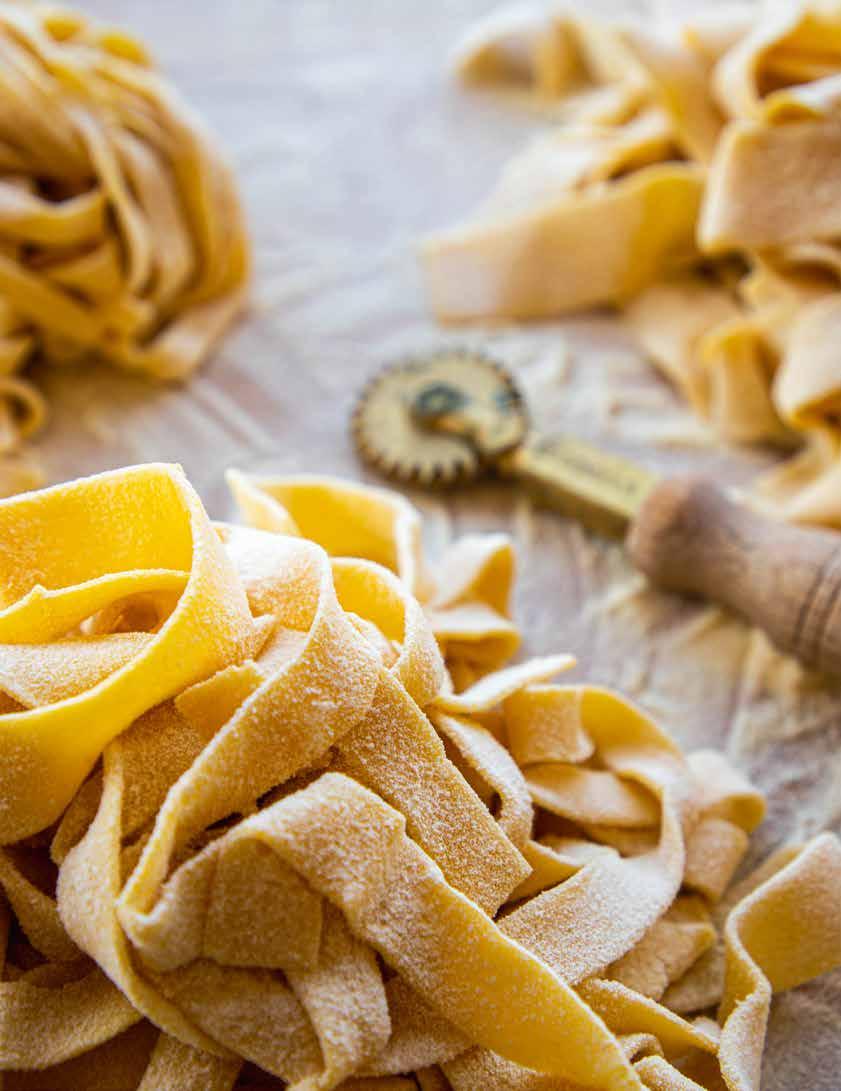
SPRING 2022 48
Rhubarb & Other Spring Wonders • Farm Labor • Politics of Coffee
Celebrating the Abundance of Local Foods in Southern Wisconsin

evoke
“One swallow does not make a summer, but one skein of geese, cleaving the murk of a March thaw, is the spring.” —ALDO LEOPOLD
NOTABLE EDIBLES by Emma Waldinger
RECIPE INDEX
DRINK LOCAL
The True Price of a Cup: Coffee Politics by Rachel Werner
NOURISH The Sting of Spring: Stinging Nettles by Laura Poe Mathes
WELLNESS by Hannah Wente
ON THE FUNGI FRONTIER by Michael Sambar
COOK AT HOME Rhubarb Isn’t Just for Crisp Anymore by Lauren Rudersdorf
FARM LABOR Growing Teams by Dylan Bruce
BACK OF THE HOUSE Making Pasta Their Own by Cricket Redman
LAST BITE
Cover: House-made pasta from chef Giovanni Novella from Bar Corallini. Photo by Nicole Peaslee.
Above: Mixing up a basil and rhubarb tonic. Photo by Sunny Frantz.

6
9
10
40
54
57
15
18
19
27
36
SUPPORTERS
SPRING
2022 • ISSUE 48
DYLAN BRUCE
Dylan Bruce was raised on a vegetable farm in southwest Wisconsin. After working his way through the food system and across the country, he now runs Circadian Organics with his partner. Dylan also co-founded SeedLinked, an app for farmers and gardeners working to create a more transparent and resilient seed system.


SUNNY FRANTZ
Sunny is an editorial and commercial photographer with a studio on the west side of Madison where she lives with her husband, their two kids and a tiny dog. She specializes in food and product photography and loves the opportunity it gives her to connect with the many wonderful businesses and entrepreneurs in Madison.
NICOLE PEASLEE
Nicole is a graphic designer, photographer and artist from Madison. She enjoys being a cat mom, hiking trips, listening to podcasts, watercolor painting, and spending time with friends and family. She is also a co-founder of New Fashioned Sobriety, an alcohol-free community based in Madison which hosts monthly meetups and events.
LAURA POE MATHES
Laura is a registered dietitian in private practice, focused on healing with real foods and herbs. She loves to spread knowledge and enthusiasm for great food, and teach traditional cooking and fermentation classes around the region. Originally from Missouri, Laura lives in Viroqua and now understands why cheese curds are a thing. She also loves to canoe, drink coffee and watch stand-up comedy.
CRICKET REDMAN
Cricket is an avid gardener, artist and designer and messy cook. By day she runs Cricket Design Works and by night she is the creative director and partner of Edible Madison. In 1993, she moved to Madison for grad school at UW-Madison and fell in love with the snowy winters, driftless landscape and her nowhusband and business partner Phil.
LAUREN RUDERSDORF
Lauren owns and operates Raleigh’s Hillside Farm outside of Evansville with her husband Kyle. Together they manage ten acres for their growing CSA and hemp businesses. When she’s not out in the fields, Lauren shares seasonal recipes on her blog The Leek & The Carrot
MICHAEL SAMBAR
Michael was raised just outside Milwaukee on a well-balanced diet of skateboarding, family road trips and weekend walks in the forest. He is a graphic designer and illustrator by profession, and in his free time he enjoys mushroom hunting, analog photography, playing drums, synthesizer-ing, cooking and growing vegetables with his wonderful wife and their big white dog.
EMMA WALDINGER
Emma (she/her) is a writer, grower and maker based in Madison. She cherishes warm summer memories spent at her grandparents’ hobby farm and harvesting from her family’s backyard vegetable garden. These experiences have been the catalyst for her fascination with the intersections between art, ecology, agriculture and good food. When she’s not dreaming of the perfect cake, Emma helps to produce community events at Pasture and Plenty.
GUEST MANAGING EDITOR
Emma Waldinger
PUBLISHERS
Christy McKenzie Cricket Redman
BUSINESS DIRECTOR Christy McKenzie
CREATIVE DIRECTOR Cricket Redman
SALES DIRECTOR Lauren Rudersdorf


LAYOUT Nicole Peaslee
COPY EDITOR Andrea Debbink


CULINARY ADVISOR Christy McKenzie
SOCIAL & DIGITAL PRODUCER Lauren Rudersdorf
ADVERTISING & SPONSORSHIPS Lauren Rudersdorf laurenr@ediblemadison.com
DRIFTLESS REGIONAL SALES MANAGER Kristen Wagner kristen@ediblemadison.com


CONTACT US Edible Madison 4313 Somerset Lane Madison, WI 53711 hello@ediblemadison.com .
SUBSCRIPTIONS
Subscriptions are available beginning at $35 annually. Learn more at ediblemadison.com/subscribe
We want to hear your comments and ideas. To write to the editor, use the mailing address above or email hello@ediblemadison.com .
Edible Madison is published quarterly by Forager Publishing, LLC. All rights reserved. No part of this publication may be used without written permission by the publisher. ©2022.
Every effort is made to avoid errors, misspellings and omissions. If, however, an error comes to your attention, please accept our sincere apologies and notify us. Thank you.
VISIT US ONLINE AT EDIBLEMADISON.COM
2 • SPRING 2022
CONTRIBUTORS
HANNAH WENTE
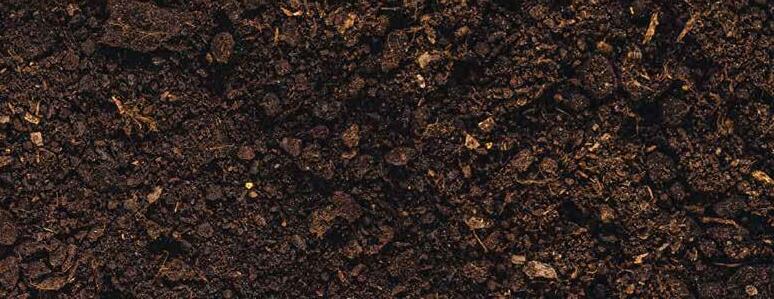
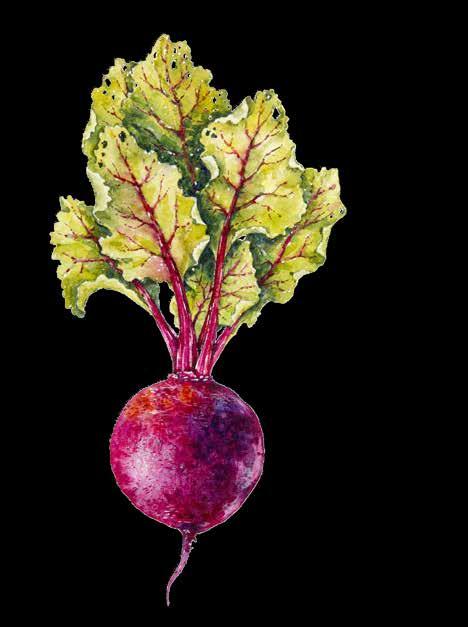
Hannah grew up as a 4-H kid on the shores of Lake Michigan. She is a freelance writer and graphic designer based in Madison. In her previous role as communications director for REAP Food Group, she helped launch the new statewide Farm Fresh Atlas project and supported farm-to-school and farm-to-business efforts. When she’s not gardening, cooking or baking, you can find her playing ultimate frisbee or paddling the nearest lake.
RACHEL WERNER
Rachel is the Nutrition and Fitness Editor for TOPS and an ecoconscious vegan, fitness professional and culinary writer. Her product reviews, food styling and photography has been featured in a variety of regional and national publications such as TheKitchn, Spruce Eats, The Gourmet Insider, Fabulous Wisconsin and Hobby Farms magazine. She is also a children’s book author (Floods, Capstone 2021) who writes about historical and science-related topics.
EDIBLEMADISON.COM 3
Sign up for our monthly newsletter The Beet to get the latest news and offerings at EDIBLEMADISON.COM Keep up with us between issues on Instagram @ediblemadison on Facebook /ediblemadison on twitter @EdibleMadison 1 2 3 Everyone Welcome! www.willystreet.coop WILLY EAST: 1221 Williamson St., Madison, WI WILLY WEST: 6825 University Ave., Middleton, WI WILLY NORTH: 2817 N Sherman Ave., Madison, WI VOTED: #1 Health Food Store AND #2 Grocery Store! Seeds, seedlings, soil, compost, seed-starting supplies and more! Local & organic vegetable seedlings available this spring! Fresh. Local. Organic. Yours!
Greetings from Christy and Cricket, This issue we’re filling in for our managing editor Lauren Langtim who’s taking time off to get in the groove as a new mom and bond with her baby boy who arrived just as the winter issue landed. This issue marks our second anniver sary as partners publishing Edible Madison, and we’re get ting the hang of the rhythm and building confidence amidst ongoing uncertainty. Emma Waldinger capably stepped in as managing editor. Our team is amazing, and we are continually grateful for subscriber support and the support of advertisers who help us keep this publication free for our community.
As we’re polishing off the editorial for this spring issue, snow is falling outside, likely ending our amazing ice skating season on the big lakes. Embracing the seasons means getting outside in the winter, but it doesn’t preclude dreaming of spring. Seed catalogs have been popping up in our mailboxes, and we feel hope in our hearts for the up coming growing season—for early spring greens, planting potatoes and planting peas as soon as the soil is workable. It’s time to consider which CSA to join even while there are still winter markets offering root stores from last year along side hoop-house greens, meat and eggs. It’s slim pickings for fresh local produce, but there are still options to eat local, particularly if you’re willing to venture to the farmers markets, co-ops and grocers who feature local produce and provisions. Thanks to many local growers including Vitruvian Farms and SuperCharge, early spring micro greens, overwintered spinach and mushrooms are available to tide us over until the first greens of spring appear.
In our first back-of-the-house feature since our Spring 2020 issue, we’re shining a light on house-made pastas from Mint Mark and Bar Corallini on Madison’s east side and Homecoming in Spring Green. We’re dreaming of dining out again soon with fresh pasta and asparagus, ramp pesto and morels once spring emerges across the Driftless.
That first trip to market is the one this issue celebrates. The first tender shoots of rhubarb, gathered in armfuls and brought to the kitchen with no real plan, just a promise of something bright and full of flavor on the table. The first bites of spring are the ones that always remind me (Christy) how amazing this local food system is, how resilient and how tender. In Dylan Bruce’s piece on farm labor, we are asked to consider the challenges our food system faces in living this four-season cycle, and to celebrate the innovative ways our local farms navigate them. Their grit and determination and these first tender shoots of spring have me running to market.
And, look for more ways to connect with Edible Madison and talented food artisans in events throughout the coming year. Starting with a virtual coffee-and-brunch box party on April 9, showcasing Wonderstate Coffee and friends and hosted by assemblyperson and chef Francesca Hong, it is a morning not to be missed! The food and conversation will focus on the issues and flavors of spring.
Let’s dig in!
Cricket Redman
Christy McKenzie P.S. As always, we welcome your thoughts and feedback. Drop us a line at hello@ediblemadison.com.



4 • SPRING 2022
PUBLISHERS’ LETTER
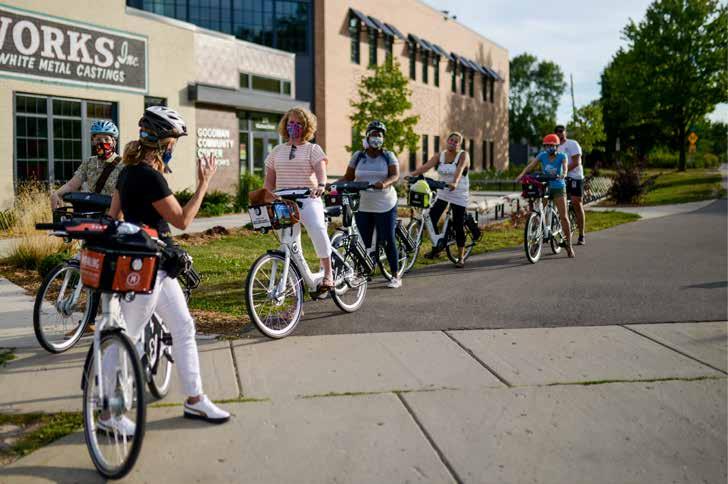

EDIBLEMADISON.COM 5 Explore the tastes of Madison by BCycle! Tour includes: guided tour, use of BCycle e-bikes, all samples along the way, discounted BCycle Annual Membership, and more! Reserve your spot at madisoneatsfoodtours.com Bike n’ Bites Food Tours BRUNCH PARTY! brought to you by Wonderstate & Friends CELEBRATE THE SPRING ISSUE WITH A sponsors include: EDIBLEMADISON.COM/BRUNCHBOX Saturday, April 9th at 10am ( VIRTUAL ) Coffee Tasting and Cooking Demo with Chef and Assemblyperson Francesca Hong Registration is free, but you can cook along at home with a Brunch Kit BRUNCH KIT DETAILS: Wonderstate Co ee, Driftless Provisions, Honestly Cranberry, Pasture and Plenty, Meadowlark Mill and Farm, Tapped Maple Syrup and more... Each kit serves up a brunch experience for four. $25 (a $75 retail value) + $15 flat rate shipping (free local pick up at Pasture and Plenty) THANKSTO OU R GOODFRIEND FRANCESCA HONG Register and get your brunch kit at :
by Emma Waldinger
Local Foodies Reading List
Madison Chefs: Stories of Food, Farms, and People by
 Lindsay Christians, University of Wisconsin Press
Lindsay Christians, University of Wisconsin Press
Despite its humble size, Madison has all the ingredients to achieve an unlikely culinary excellence: tightknit chef and farmer relationships, abundant local markets and a strong appreciation for good food. Lindsay Christians, longtime food and arts writer at The Cap Times , uses this lens to give us a glimpse into the kitchens of nine champions of cuisine in Madison. Beginning with chef Odessa Piper’s lasting impact on “farm-to-table” dining in the area, Christians profiles the diverse and creative chef talent invested in building resiliency and community around Wisconsin’s seasonal ingredients and craft products. It’s a vibrant recent history of Midwestern sensibilities evolving into Wisconsin fine dining, without losing any of its organic charm. Devoted foodies, Madison enthusiasts, and curious diners alike will find joy in this book.

A Perfect Pair: The History of Landjaeger in Green County, Wisconsin by Jesse
Brookstein, Karate Fight Publishing
Wisconsin is certainly a state obsessed with locally crafted food and beverages—and meats are no exception. In A Perfect Pair , Jesse Brookstein explores the Wisconsin connection to landjaeger (lond-yay-gurr), a shelf-stable, hickory-smoked and fermented meat snack that adorns meat shop displays around the state. Brookstein takes us on a tour of Green County, Wisconsin—an area where many Swiss and German immigrants settled—to meet some of the legendary shops and producers that have been perfecting landjaeger for decades. History, science, and good storytelling come together in this book, from the process and logistics of fermenting sausage to the lore behind the meaning of “landjaeger.” Along the journey, Brookstein harnesses our enthusiasm for local meat producers and landmark meat shops, kindly reminding the reader to support the folks that feed us and taste something delicious in the process.
Home Cooking Comeback: Neighborly Advice & 40 Pleasing Recipes from the Farm Kitchen of a Midwestern Food Journalist by Jennifer
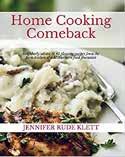 Rude Klett,
Rude Klett,
Independently Published

Slow-cooked maple pork chops. Black raspberry buttermilk pancakes. Chocolate butter pecan turtle bars. Creamy chicken and wild rice hot dish. Reading the recipes in Home Cooking Comeback by Jennifer Rude Klett, you can’t help but feel wrapped in the warmth of a handmade quilt next to an open fire while snowflakes fall outside. Klett features simple yet delectable dishes while highlighting the produce and products—and the local farmers and land stewards cultivating them with care—that are abundant in Wisconsin. A little extra “neighborly advice” is offered to inspire seasoned home cooks and beginners alike to reap the benefits of cooking at home—from eating for health to saving money and producing less waste. Klett’s voice serves as a comforting guide (like the comfort food she writes about), inviting the reader into her home kitchen and sharing stories with each recipe that could have come from any Wisconsinite’s own memory. Visit jrudeklett.com for dates and details on upcoming author talks.
Manna Café and Bakery Cookbook: A Memoir of Two Businesses, A Community, and the Food That Connected Them by Barb Pratzel, Little Creek Press
Manna Café and Bakery Cookbook is a celebration of the places in each community where we find home outside of our own. When Manna Café and Bakery closed in 2020 after 15 years in business on Madison’s north side, the loss of that sort of place was felt deeply. With seasoned backgrounds in hospitality, Barb and Mike Pratzel created Manna Café to reflect their own ethos. This motive brought together an atmosphere of good company, kindness and unforgettable food. Barb Pratzel captures the community created by their two businesses, including the Collins House Bed and Breakfast, and many years of caring for others in her stories. Alongside this memoir, she continues to feed the masses with Manna’s beloved favorites in 150 beginner-friendly recipes including their renowned oatmeal pancakes and many other café classics. In the spirit of Manna, Pratzel says, “the cookbook made many people whole again, myself included, for it brought my own career full circle, and let me keep on giving in a way that need not end.”
6 • SPRING 2022
Building a Stronger Food System
FairShare CSA Coalition’s Farmer Apprenticeship Program


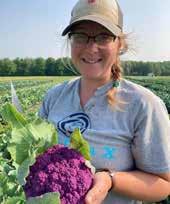
FairShare CSA Coalition offers the first registered apprenticeship for organic vegetable production in the country. This program has dual benefits for both organic vegetable farmers and prospective organic vegetable farm managers. Apprentices build technical skills and competency in key areas of farm management under the mentorship of an established grower, and farmers invest in reliable leadership on their farms, strengthening the ongoing success of organic farming. Over two years, apprentices receive hands-on training with a farmer educator to learn every aspect of running a successful farm from seeding and transplanting to finances and marketing. On-the-job training is supplemented with off-season coursework through the Wisconsin Technical College System and compensated with an hourly wage. Cultivating a mutually beneficial relationship is a key component of the program: apprentices gain confidence, autonomy and applicable skills while supporting a farmer who is engaged with their ongoing development and potential. Visit csacoalition.org/apprenticeship for more information.
Top:
Left:
Right:

Wisconsin Alumni Research Foundation’s UpStart Program Madison
All you need is a small seed of an idea for the UpStart program to help you plant and cultivate it. This free entrepreneurship program teaches women and people of color all aspects of launching a business from writing a business plan and navigating regulations to managing finances and marketing on social media. With an emphasis on building confidence and creating a professional network, the program also provides the tools for already established small business owners to further strengthen their operation. While cost and resources can often be a considerable barrier for fledgling entrepreneurs, UpStart removes this obstacle. UpStart alumni come away with ongoing program resources and a lasting cohort support network to evolve a stronger entrepreneurial ecosystem with more diverse representation. The Small Business Development Center (SBDC) staff and community business leaders provide quality coaching and coursework instruction. Entrepreneurial interests in every field are welcome.
Fall 2022 Cohort 18 applications will open in May 2022. Learn more and apply at warf.org/upstart .
High Meadow apprentice, Chente, in the greenhouse.
Red Door apprentice, Alex, with cauliflower.
Springdale apprentice, Angela, with tomatoes.
EDIBLEMADISON.COM 7
Keena Atkinson develops her business R’oujie Wellness through the UpStart Program.
Photos courtesy of Fairshare CSA Coalition and Wisconsin Alumni Research Foundation
Wisconsin Innovation Kitchen (WINK) Mineral Point

Wisconsin Innovation Kitchen (WINK) helps new and existing food businesses grow by providing a space for new products to evolve and take shape. Their mission is to support small business development and showcase the amazing benefits of local foods and a strong regional food system. WINK is an FDA-approved, organic-certified, state-inspected, and fully licensed food processing and commercial co-packing facility owned and operated by Hodan Community Services, an organization and community rehabilitation center that supports people with disabilities. With strict attention to safety and food guidelines, Wisconsin Innovation Kitchen produces affordable, scalable batches of an assortment of sauces, beverages, preserved produce, spice mixes and other packaged goods for food entrepreneurs, restaurateurs, family farms and other businesses from entry-level to established.

Visit wisconsininnovationkitchen.com for more details.
Left: Bob’s Bitchin’ BBQ staff bottling their Carolina BBQ sauce at WINK.

8 • SPRING 2022
while-you-wait sharpening of knives, scissors, and garden tools any day but Sunday 3236 B University Avenue, Madison, WI 53705 · www.wisconsincutlery.com
Photo courtesy of Wisconsin Innovation Kitchen
>>
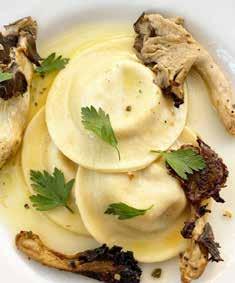
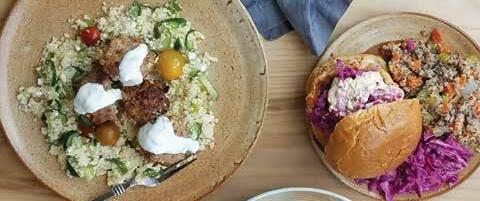
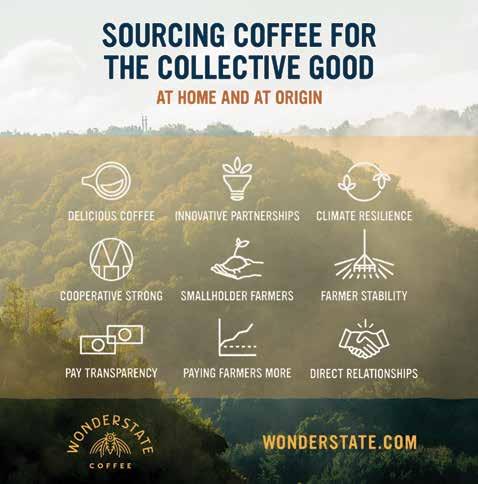
EDIBLEMADISON.COM 9 Galette with Wild Ramps and Mushrooms Zuppa Di Fungi Spring Salad with Warm Mushrooms and Feta SPRING 2022 RECIPE INDEX SWEET Upside-Down Rhubarb Olive Oil Cake 32 SAVORY Cream of Nettle Soup ........ 17 Smashed Cucumber, Rhubarb and Spring Herb Salad ....... 28 Rhubarb Chutney .......... 29 Beet and Pickled Rhubarb Panzanella ......... 31 BEVERAGES Basil and Rhubarb Tonic 30 WANT MORE SPRING RECIPES? HOP ONLINE AT EDIBLEMADISON.COM/RECIPES and sign up for our monthly E-Newsletter REAL FOOD. REAL LOCAL. FARM-TO FREEZER stock up on frozen favorites COOK FRESH weekly meal kit delivery and pick-up CURBSIDE PICK-UP order from our menu online (air-fives included) 2433 University Avenue | pastureandplenty.com Making eating well and eating local a little easier every day.
by Rachel Werner
The True Price of a Cup: COFFEE POLITICS

One shot of espresso. A simple pleasure in the world’s most developed countries which many of us enjoy with little thought to how—and who—ensures a consistent flow of java is available to satiate our daily desire. Behind posh latté orders, there is an intricate global network of coffee growers, suppliers and buyers. A complex web riddled with environmental and human rights violations, often a trigger for cancel culture in other major industries, but frequently ignored in regards to coffee production. How does the average consumer ascertain if they could be purchasing a more ethical cup of coffee?
Four small businesses divulge what it means to be a change agent disrupting the status quo by giving customers access to sustainably-grown coffee—sans the hidden cost of cheap human labor or environmental degradation.
For a coffee to be ethical, Madison Chocolate Company founder Megan Hile believes several factors come into play, the primary one being traceability. Which can be assessed by, first and foremost, considering where the coffee you’re drinking comes from as well as who grows it. “Many of us have no idea where our coffee is grown or the face behind it. I know it sounds cliché, but ‘know thy farmer’ is important,” she states. Answers to those two questions, Hile insists, are a necessary precursor to learning how much the cultivators are paid.
“Many
idea where our coffee is grown or the face behind it. I know it sounds cliché, but ‘know thy farmer’ is important.”
Coffee growers for centuries have been paid below commodity rates for their hard work. In particular, Hile thinks more consum ers should question why all of the work and people involved in coffee production are consistently devalued. She also encourages other business owners to buy coffee from people they know (whenever possible), in addition to taking the extra step to inquire if the farmers are paid above fair-trade established value.
“We are fortunate enough to work with Royal Coffee and Catracha Coffee Co. who make it their mission to educate the buyer on who the producer is. It has become Mayra Orellana-Powell’s mission to educate small producers within the Honduras community she start ed a cooperative in about the value of their product and how to continuously improve upon their work. Everyone who grows for them receives an extra $1-2 per pound. They in turn receive education on farm ing, land improvement, product valuation and more,” Hile explains. “The money is reinvested directly back into their community. We just helped them launch their third ‘payment’ coffee program. The consumer pays an extra dollar per purchased bag of coffee, which we send directly back to a fund that is being instituted for microloans or emergency medical funding for those in the coffee community.”
10 • SPRING 2022
Left page: illustrations by Nicole Peaslee. Right page: photos courtesy of Progeny Coffee.
of us have no
Check Your Sources

A lack of transparency in regard to how coffee is imported and exported has plagued the industry for decades. Roasters rare ly purchase directly from a farmer—the initial producer. An importer, exporter and/or other third-party vendor often nego tiate both sides of the transaction, frequently taking a significant portion of the profits in the process. Because of this seemingly perpetual imbalance in the revenue stream, Estación Colombia is intentionally creating a new model for coffee exportation and distribution by prioritizing one of the most lucrative parts of the coffee chain: the roasting. Their coffee is roasted in Colombia so that this income stays in the country, thereby helping the industry to expand locally, since historically, premium coffee has only been exported to be roasted abroad.
Founder Maria Clara Ruiz Zapata reveals the coffee growers she partners with are paid an additional revenue from the sales of their final product, now getting 45 cents for every pound of roasted beans sold. This extra income is paid to them every month in an effort to help them during the seasons when they don’t have income. Her company also gives the coffee growers the opportunity to participate actively in the commercialization of their product abroad. Ruiz Zapata and her partner foster connec tions between the farmers and the people who are buying their product by helping to organize and host farm tours for interested customers whose purchases are financially supporting this alter native business model.
“Coffee growers need to be paid on top of their production cost to make a real income. This means that the whole chain needs to balance the equation on how to divide the profit,” says Ruiz Zapata. “Prioritizing water as a resource with high value is also key. Coffee

EDIBLEMADISON.COM 11
Coffee berries straight from the hands of Estación Colombia.
uses large amounts of water to be grown and milled. An ethical coffee supply chain should properly sustain the ecosystems, water springs and communities that protect the water resources.”
Ecosystem Externalities
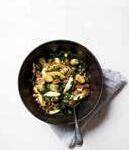















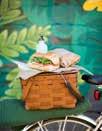
Environmental impact is a growing concern across numerous sectors. And the agricultural methods used to grow and harvest coffee are no exception. According to data verified by The World Counts “the coffee required for one single cup of coffee takes 140 liters of water to produce.” Another alarming statistic is “by some estimates, every cup of coffee consumed destroys roughly one square inch of rainforest, making it a leading cause of rainforest destruction.” Therefore, the global expense of a daily cappuccino is much greater than the average consumer would ever imagine.
Progeny Coffee co-owner Maria Palacio affirms, on a macro-level, the biggest “blindness to abus es” in many coffee supply chains typically involve not going beyond the obvious to really consider the whole ecosystem surrounding what is being sourced, plus the challenges involved. Doing so is “really the only way to make better, more informed choices,” Palacio insists. “Consumers have the power to shift companies’ behaviors. It starts by asking and demanding more transparency and questioning current systems. There are many resources out there where consumers can get more information like the Specialty Coffee Association (SCA), which regularly publishes information about the state of the coffee industry.”
12 • SPRING 2022
Coffee growers need to be paid on top of their production cost to make a real income. This means that the whole chain needs to balance the equation on how to divide the profit…
It’s more than a grocery store. It’s a community! 609 N Main St, Viroqua • open daily • www.viroquafood.coop Cozy, eclectic coffee spot serving up seasonal, organic fare & positive vibes in the Driftless. 815 Water Avenue, Hillsboro, WI • letsshinecoffee.com • FB: Let’s Shine Coffee • @letsshinecoffee Love the magazine? Don’t miss an issue. When you become a subscriber you’re supporting our local food system. Seasonal recipes from local chefs in every issue and online. Celebrating Abundance of Local Foods Southern Wisconsin SPRING 2021 Fermentation Foraging Chefs in Pandemic Indigenous Seed EDIBLE-44-F.indd FOR SALE. 100% OF PROCEEDS GO TO LOCAL CHARITIES. WALTERTheGenerousHome.com WAUNAKEE, BUILDING HOMES. GIVING HOPE. Veridian has long-standing history giving the communities we build. this something entirely and thrilling us. The Generous Home. home that made possible hardwork generosity our partners. delighted 100% proceedsfromthe The Home directly charities. featured the2021MadisonAreaBuildersAssociationParade of this 5,585-square-foot masterpiece boasts the of finishes, the best brands the intentions. Learn www.TheGenerousHome.com. BENEFITING CHARITIES: American Children’s Beacon Charities) Prairie Network Boys Clubs County Cystic Foundation Domestic Services Humanity House Porchlight Food Second Waunafest Waunakee WaunakeeNeighborhoodConnection Celebrating the Abundance Local Foods in Southern Wisconsin SUMMER 2021 45 Day Tripping Grill’s On Westridge Farm El Mercadito De Centro EDIBLE-45-Draftfinal.indd
Purchasing Power
Increasingly, the onus is on each of us to find out more about how staple goods and products like coffee are continually funneled to our doorsteps. A broken system cannot—and will not—be fixed or severed overnight. Willy Street Co-op communications director Brendon Smith admits the need to recognize “that there is an inher ent, and at times, uncomfortable tension” between different ethical shopping frameworks. “For example, products that are organic, fair ly-traded, humane, and environmentally sustainable are not always within the financial reach of some of our co-op owners and commu nity members,” Smith shares. “And some items that are culturally appropriate for some owners may not fall within the organic guide line. Whereas items that others value for their convenience may not have packaging that is ecologically-mindful. So we have chosen to lean into this tension, finding a balance that is constantly evolving as our ownership and food systems grow and change.”

Which means our collective purchasing power, if put to proper use, can stimulate a shift in the politics of coffee at every level. Because a “supply and demand” paradigm has value from an inverse perspec tive, too. We can still savor our fave morning sip, while also ensuring no one else—nor the planet—is paying too steep a price on the back end.
Top: Progeny co-founder Maria Palacio works with Colombian coffee farmer Hector Castro. Bottom: Maria Clara Ruiz Zapata, founder of Madison-based specialty coffeeshop, Estación Colombia.





Featuring artists and studios in Viroqua, WI & surrounding areas. windingroadsart.com
 Photos
Photos
courtesy of Progeny Coffee and Estación Coffee
June 4 & 5, 2022 Saturday & Sunday | 10am - 5pm
LEARN MORE AT UPSIDEGROUNDS.COM a boost to your morning routine
A Great Cup at Home
So, you’ve sourced great beans, now how do you get the most out of them? Many of our favorite roasters share coffee know-how freely on their websites! These tips are adapted from Wonderstate’s Education page.
1. Store your beans right! Keep them in an airtight container, away from the light and at room temperature.
2. Grind beans fresh and to a texture just right for your brew style.
3. Use filtered water, heated to 200°F to 210°F and in the right proportion: Generally 1 part coffee to 16 parts water by weight or 2 tablespoons ground coffee to 8 ounces water.
Get the most from your home brew style! Check your grind and pull out that scale to see if your normal pot is to up to spec.
Auto Drip
Medium grind. Use a 1:16 coffee to water ratio, or 80 g to 1280 g water (8 cups). Don’t let the coffee sit on a heater! We recommend an insulated coffee pot to keep your coffee hot.
Pour Over
Medium grind. 1:16 ratio. 22 g coffee to 350 g water. Pour a little warm water through the filter to warm the vessel before use, then discard water. Set your vessel and pour-over cone with grounds on a scale. Start timer, add 45 g hot water, allow to bloom for 45 seconds. Then pour in 100 g pulses, aim to add all 350 g water within 2 minutes.
French Press
Medium-course grind. 1:15 ratio. Boil water and preheat the press, then discard water. Stir the brewing water and grounds together and steep for 4 minutes before pressing.
Local Roasters to
Ancora Coffee Roasters Madison
Ancora fosters relationships with small growers, cooperatives and communities across the globe whose operation sustainably stewards their land. They believe their responsibility extends far beyond great taste.
JBC Coffee Roasters Madison
Named one of the nation’s best coffee roasters in 2021 by Gear Patrol and a five time Good Food Award winner, JBC focuses on providing a seed-to-cup experience and honoring everyone involved. They purchase coffee directly from producers and through brokers who share their goal of making coffee a sustainable commodity.
Just Coffee Madison
Just Coffee Cooperative is a workerowned coffee roaster dedicated to creating and expanding a model of trade based on transparency, human dignity and environmental sustainability. They build long-term relationships with small-scale coffee growers.
Ruby Nelsonville
Ruby is guided by the notion that responsible business can do good and create value for everyone involved, from their producers to consumers. Their blog explains with great transparency and detail their sourcing strategies and stance around sourcing to support good labor practices, sustainability and quality.



Wonderstate Coffee Viroqua
Based in Viroqua, with coffee shops around Wisconsin, this small roaster makes a big impact, from their 100% solar-powered roastery to their minimum-price guarantee to farmers and 5% giving program. Wonderstate holds stringent sourcing standards that take labor practices, climate resiliency, bean quality and farm size into account.
Love
The Sting of Spring: Stinging Nettles
NOURISH LAURA POE MATHES
After maple syrup, the first sign of spring to me is the arrival of stinging nettles. Eating them offers the first bite of green after a long Wisconsin winter. Nettles, or Urtica dioica, are a wild green that emerges in early spring and grows all the way through fall; however, they are at their tastiest and most nutritious in the springtime. Unlike many other wild greens, nettles have a mild flavor, with a slight saltiness to them, and are reminiscent of spinach. However mild-tasting nettles may be, they do have an edge to them: when raw, nettles cause a stinging sensation on the skin and can even produce a mild rash. The sting that gives nettles their name is caused by tiny hair-like needles on the leaves and stem of the plant that inject the skin with formic acid and histamines, creating the stinging sensation and skin irritation (some with arthritis even use the “sting” to soothe joint pain—a practice called flagellation—but this not recommended for most). For humans, this sting is uncomfortable yet overall harmless in small amounts, but it is best to wear gloves when picking and processing raw nettles to avoid the sting. Processing
nettles through cooking, pureeing, crushing and drying can all remove the stinging effect, making them safe to consume in these forms.
Nettles can be found all over the world in temperate areas, including all around southwest Wisconsin. They are a perennial plant that grows in the woods, in hedgerows, ditches and roadsides, and most any disturbed area where wild plants are growing. Do not eat nettles that are growing by the road or that may have been sprayed with pesticides; only choose those from clean areas where you know what has been applied to the area. Again, it is best to pick nettle leaves when they are young and tender, before the plant flowers or goes to seed, but they can grow to be four feet or taller when matured. Nettle leaves are easy to identify: they are dark green, slightly heart-shaped and come to a point, with serrated, tooth-like edges. Their paired leaves grow opposite from each other on the stem. Of course, if you touch the plant and feel the sting, that will help with identifying this plant as well.
 Left page: illustrations by Nicole Peaslee. Right page: photo by Kristen Wagner.
Left page: illustrations by Nicole Peaslee. Right page: photo by Kristen Wagner.
EDIBLEMADISON.COM 15
You can use your foraged nettles fresh or dry them for later use in teas, seasoning blends or soups. Stinging nettles have a cousin, the wood nettle, that is also edible and also stings, but has a slightly different appearance. Before foraging for nettles or any wild food, be sure to do your research on plant identification, including finding pictures, learning look-alikes and be sure to know how to practice responsible harvesting. The books of Samuel Thayer (a fellow Wisconsinite, let’s support that!) are fantastic resources for all things foraging, especially for those new to this practice. Truly, though, the best ways to learn foraging are from a knowledgeable friend or through a local class on wild edibles, as hands-on experience is superior to an internet search.
Nutritionally, stinging nettles are incredible sources of minerals, which is the main reason I find them so great to add to the diet. They provide hard to find plant-based sources of iron and calcium, along with magnesium, manganese, potassium, zinc and copper, vitamins C and K and fiber. While some of the nutrient content is decreased during cooking, it does decrease the oxalate content of nettles, which makes the calcium and iron more bioavailable. Besides vitamins and minerals, nettles are also a great source of antioxidants, such as chlorophyll, beta carotene and more polyphenols than most other wild plants, including quercetin, rutin, lutein and lycopene. The antioxidant content of nettle leaves are highest in the spring, and the fall leaves have a high amount of cystoliths (small calcium crystals) that can be irritating to the kidneys, so picking early in the year is best.
Nettles are considered an all-around health tonic and, because they have been linked to so many different health benefits, are often added to many herbal and nutritional protocols. We are lucky to have them here in southwest Wisconsin. They can be considered an important food or herb simply because of their high mineral and antioxidant content, but there is more to them besides nutrition. Since stinging nettles have been used for centuries as food and medicine, there has been quite a bit of research into the health benefits
this wild edible may offer. In folk medicine, nettle leaves have been traditionally used for issues with the kidney and bladder, as well as urinary tract infections and gout, in part due to their diuretic effect. The root of the plant is a common herbal remedy for issues with the prostate. Nursing mothers sometimes use nettles to help improve lactation, as they can help increase milk production. Nettles contain natural antihistamines and are often used to combat seasonal allergies in the spring. Other benefits include anti-inflammatory and hypoglycemic/ anti-diabetic properties. The antimicrobial action of nettles has been shown to be effective against both bacteria and yeast, including Candida albicans. That all of these potent nutrients are found in this humble, wild plant is pretty amazing. When using nettles medicinally, they are often prepared as a tea, but they can be found in tincture and capsule form as well. I love to pair nettles with mint and elderflower for a lovely springtime tea that is wonderful served hot or iced.
However, nettles do not have to just be used for medicine—they also have a place in the kitchen. In the British Isles, nettles were traditionally used to brew an herbal beer, but cooking with them is great, too. You can use them as you would any other mild, leafy greens like spinach: add to a soup, curry, or stir fry or in fried rice, on pizza, in pasta dishes (especially stuffed pastas like ravioli), add to egg dishes like frittatas or omelets, use in sauces like pesto, chimichurri or green goddess dressing, add small amounts to fermented vegetables like sauerkraut, or use as a mineral boost when making meat or vegetable stock. No matter how you use them, be sure to wear food-safe gloves when chopping raw nettles and only consume uncooked nettles in small amounts, after being prepared through pureeing or fermentation.
With so many leafy greens available at the grocery store, why search out a wild green like nettles? Quite simply, they are more nutrient-dense and packed with antioxidants than any green found at the store. Plus, they are free when foraged, widely available in our area, delicious, different and a great way to welcome spring, which is definitely something to celebrate.
16 • SPRING 2022
Nutritionally, stinging nettles are incredible sources of minerals, which is the main reason I find them so great to add to the diet.
Cream of Nettle Soup
If you are a city dweller, struggle to find nettles in your area or simply are unsure about plant ID, you can often find stinging nettles at farmers markets and co-op grocery stores in the spring to get your wild green fix without having to forage for them.
Remember to wear gloves when preparing the nettles, and feel free to substitute spinach or other greens in this recipe if nettles are unavailable. Serve with a dollop of sour cream and a garnish of thinly sliced scallions.
Makes 2 quarts
Prep time: 15 minutes
Cook time: 40 minutes
INGREDIENTS
6 cups chicken stock (or vegetable broth)
1 pound new potatoes, diced (peeling optional)
3-4 scallions or ramps, sliced
4 cups fresh nettles, young leaves only, chopped
2 cups whole milk
½ cup heavy cream
2 tablespoons butter
¼ cup fresh herbs: dill, parsley, mint or a mix of these
1½ teaspoons sea salt
½ teaspoon black pepper
1 tablespoon lemon juice
DIRECTIONS
1. In a medium stockpot, bring the chicken stock, potatoes and scallions to a boil. Let simmer for 8-10 minutes until the potatoes start to become tender.
2. Add the nettles and cook for 5 minutes until they shrink down in volume and become tender.
3. Add the milk, cream, butter, herbs, salt and pepper, and let simmer uncovered for 5-10 minutes to thicken and reduce slightly.
4. Stir in the lemon juice, and remove from the heat.
5. Puree the mixture using an immersion blender or transfer to a blender (be very careful when pureeing hot liquids), blending until smooth and uniform in consistency.

6. Return to heat and simmer, uncovered, 10 more minutes to thicken.
7. Taste for seasoning and adjust as needed.
Photo by Sunny Frantz
HELLO BEAUTY
Maria Henry launched Luminous Rose, an online health and beauty store, in 2017. Henry helps customers combat acne, rosacea, aging skin and other issues. “I love connecting with people and helping them find a solution to their skin and hair concerns,” Henry says. “I’m very much involved in my customers’ journeys towards great skin and hair.” Plants from her farm, like calendulas, dandelions, violets and nettles, are infused into various organic oils. The most popular products she offers are shea and rose face cream, rose gold face serum, and green tea and chamomile face wash.

luminousrosebeauty.com | @LuminousRoseBeauty

TEA TIME
Telsaan Tea sells a variety of loose-leaf green, black, white, oolong and herbal teas at their shop in Mount Horeb, as well as through monthly and bimonthly subscriptions delivered right to your door. Founded by Erin Ulrich in 2015, Telsaan is one of a few specialty tea providers in the Madison area. They offer a wide range of blends, perfect for serving warm or iced during every season. In the shop, you can also find great local products like honey from Black Earth, chocolates from Paoli, and ceramic infuser mugs from Center Ground Studios in Mount Horeb. telsaan.com | @telsaan

URBAN OASIS

Shilpa Sankaran always dreamed of creating a retreat spa that blended her Indian heritage, healing wisdom and love for Madison. Kosa Spa opened in November 2019 within Garver Feed Mill where they offer a broad array of services including retreat time with steam and sauna ritual, as well as nourishment from locally sourced Kosa Kitchen. Ayurvedic treatments like the popular Abhyanga (a warm oil lymphatic massage) soothe body, mind and soul. Subscribe to their newsletter to learn more about featured services and special events such as their upcoming Spring Herbal Beverage Blending class. kosaspa.com | @kosaretreat
FROM SUPERIOR, WITH LOVE
Authentic Superior, a nonprofit collective of local producers on the south shore of Lake Superior, offers an array of wellness products in their online store. Wild Grove Farmstead’s pygmy goat milk soaps, hand-harvest and certified organic CBD and CBD tinctures by Northwoods Botanicals, and Lea’s Organic Herbal Skincare products made from organic herbs and plants are a few of the nourishing products available. Find something authentic for friends, loved ones or yourself.
authenticsuperior.com/marketplace @authenticsuperior, @authenticsuperiorwi
by Hannah Wente
At Edible Madison, we understand that self-care is often the last thing we make time for, so we are sharing the stories of four local businesses who make it their mission to help people live healthier more balanced lives.
SPONSORED CONTENT
ONTHE FUN GI FRONTIER
From
Invasive:

EDIBLEMADISON.COM 19
the Delicious to the
A Mushroom-lover’s
Every spring, the forests thaw out, dust winter off the duff and awaken with new growth. As saplings take root and young buds emerge, a humble, vital organism materializes from the dirt: the mysterious—and often delicious—mushroom. From the foraged to the farmed, southern Wisconsin offers an array of choice in edible fungi. at Madison’s Edible Fungi
Look
By Michael Sambar
Photo by Esmeralda Sambar
“You don’t find the mushroom,” seasoned morel hunter Todd Lund explains as he stirs a pan of freshly harvested morels sizzling in butter. “The mushroom finds you.” His enigmat ic advice captures the mystique of morels, the coveted delicacy that pops up in Wisconsin woodlands each spring and in more unusual places such as flower pots, fireplaces, and even the remains of deceased pets. Unpredictable and ephemeral, morels attract eager mycophiles to the forest every year, their unique taste earning them one of the high est spots among fungi in the culinary canon. Lund spoons a glistening morsel onto a paper towel and hands it to me. The taste is subtle, one-of-kind and difficult to describe. It’s meaty, earthy, nutty and woodsy. It coats my palate with a delicate richness that immediately leaves me craving more. The morel’s mild flavor is often used to elevate omelets, quiches and pizzas; enrich cream sauces and pastas, and provide a savory counterpoint to wild game and meat. But they’re also perfect on their own, sautéed in something fatty and sprinkled with salt.
Lund, like many mushroom hunters, is charmingly hesitant to reveal the exact location of his morel spot. It’s somewhere near the Kickapoo River, and it consistently yields bagfuls of the honey-combed, hollow, sac-fungus. He explains that a good rule of thumb for finding morels is to look up: find trees that are dead or dying (typically elm or ash trees) and examine the ground near the base. Recently burned land and apple orchards are also known to foster the delectable morel. Morels typically start appearing in mid-May, after the first warm rain of the season, or when the oak leaves are the size of squirrel ears. And when you find one, there’s likely more nearby. The allure of mushroom hunting for Lund, like


Morel-y Speaking
...the mushroom finds you.
From Log to Ladle
For fungi-lovers less inclined to aimlessly wander the woods in search of mushrooms, or less comfortable iden tifying the edible kinds, local growers offer a wide range of cultivated, gourmet varieties. Matt Neff, of Mu Mushrooms, grows shiitakes on reclaimed oak logs at his small urban farm on the east side of Madison. “Fresh log-grown shiitakes are on another level,” says Neff. “I love to fry them up in ghee or sesame oil with salt and pepper, but I also love using them in miso soup, on a shiitake melt, or for jerky.” Committed to an open-source philosophy, Mu Mush rooms hopes to educate people about the joy and ease of growing mushrooms at home. “We hope to get kids and adults interested so people incorporate mushroom grow ing as a regular part of their spring gardening. We also want mushroom logs in everyone’s backyard, to create a decentralized community food source for stronger local food resilience and self-reliance,” explains Neff.
In the past year, Neff’s shiitake cultivation has flour ished to the point where he sells fully inoculated logs to people interested in growing their own mushrooms at home. Neff also cultivates the lesser known nameko mushroom (also known as the slime mushroom) which offers a snappy texture and nutty taste, perfect for stir fry.
 Left: photo by Michael Sambar. Right: photos courtesy of Mu Mushrooms.
Left: photo by Michael Sambar. Right: photos courtesy of Mu Mushrooms.
Another Madison-area farm excelling in mushrooms is Vitruvian Farms in McFarland. As co-founders Shawn Kuhn and Tommy Stauffer guide me through their well-organized incubation rooms, they point out a specific mushroom vari ety that has been particularly popular: lion’s mane. “People are really starting to get excited both on the restaurant level and at farmers markets about lion’s mane. There’s been a lot of conversation about its effects on the mind and general health benefits,” explains Stauffer. Kuhn adds: “Preliminary studies have found that it helps regenerate the myelin sheath, which is a fatty protective layer on the long arm of the neurons. The more insulated that is with fat, the better your electrical signals fire.” As I mull over this fact, surrounded by shelves of the shaggy, alien-like orbs bulg ing out of sawdust bags, I can’t help but notice how similar the mushrooms look to brains themselves, and I wonder if the visual resonance has any evolutionary, ancestral rela tion to our own neural networks.
The culinary uses of lion’s mane are as interesting as the medicinal research around it. Its fruiting body has a soft, shreddy consistency, somewhat like seafood, which lends itself well to vegetarian versions of crab cakes, lobster rolls, and fish tacos. In addition to lion’s mane, Vitruvian grows chestnut mushrooms, black pearl kings, gray oysters and shiitakes—all of which are choice edibles and have distinct uses in the kitchen. “I love to cook shiitakes sliced and then sautéed in a soy-ginger-garlic glaze, either with honey or maple syrup. It creates this savory, sweet, amazing flavor. I can’t stop eating them,” muses Kuhn. Stauffer adds, “Shii takes have a very recognizable umami essence that comes through even when you cook them with other things, whereas a lot of other mushrooms like oysters have such a mild flavor that they really soak up your cooking medium and become a flavor vessel for your cooking addition.”
Below: Partners Tommy Stauffer and Shawn Kuhn of Vitruvian Farms. Right: Shawn Kuhn of Vitruvian Farms holds a lion’s mane mushroom, nearly ready for harvest.

22 • SPRING 2022
Food
Brain
I can’t help but notice how similar the mushrooms look to brains themselves, and I wonder if the visual resonance has any evolutionary, ancestral relation to our own neural networks.


EDIBLEMADISON.COM 23
Photos by Michael Sambar
logs and function as primary decomposers, breaking down plant matter and transforming it into soil, one step in the forest’s impeccably tuned cycle of life and death. Despite this important role in the ecosystem, when introduced into a non-native habitat, mushrooms can become an invasive species just like buckthorn, emerald ash borer or zebra mussels. This information surprised me as I spoke with UW-Madison mycology professor Dr. Anne Pringle, PhD. Dr. Pringle is alarmed by the sudden appearance of golden oysters in local forests and is concerned about how they might throw off the delicate balance of the environment and threaten the ecosystem’s biodiversity. “It’s clear that these mushrooms have escaped cultivation,” Dr. Pring le explains, emphasizing that the grow-native concept should apply not only to plants, but mushroom growers as well. “You would never go out and plant garlic mustard in your garden,” she poignantly compares. “Even though it is technically edible, it outcompetes other species and reduces biodiversity.”

It’s not yet clear what impact golden oysters will have on our region. “We would be rather negligent to assume that the rapid spread of any non-native species would be inconsequential to native ecosystems. The golden oysters’ swift spread suggests that the native decomposers are being outcompeted and displaced,” mycologist Andi Bruce states in her UW-La Crosse master’s thesis. Admit tedly, I stumbled upon them many times last summer and found them to be an excellent addition to ramen and rice bowls. But my new awareness of the possible threat they pose to local ecosystems makes me check my enthusiasm. In retrospect, it was strange to find golden oysters growing so prolifically, given that I had never encountered them in previous years. And while I genuinely savored the experi ence of eating them, it would be tragic if they somehow outcompeted other beloved mushrooms such as morels, chanterelles, trumpets or my personal favorite—hen of the woods, also known as maitake or the dancing mushroom. Its appearance is like a flower, with multiple lobed petals radiating outward in rhythmic gradations of brown and gray. When cooked right, it becomes crispy around the edges, indeed resembling the flavor of chicken, but with a peppery, woody dimension. In mythology, it is alleged to produce more vivid dreams at night. I have yet to find a maitake of my own in the wild, though they commonly appear around the bases of oak trees in early fall. Perhaps this will be the year I find one—or perhaps, rather, it will find me.
Above: Golden oyster mushrooms have been emerging in forests and shady spots across our region in recent years.
Right: A solitary morel emerges from the spring soil.

24 • SPRING 2022
Photos by Michael Sambar
HOME + LIFESTYLE
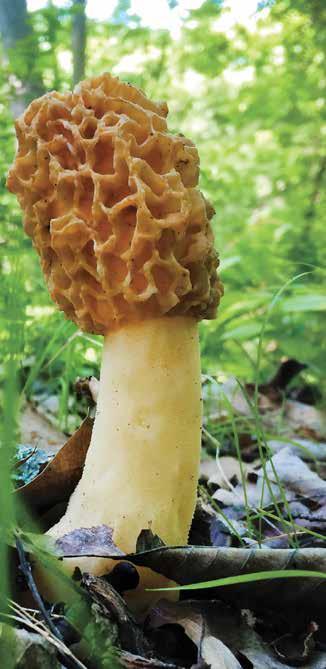



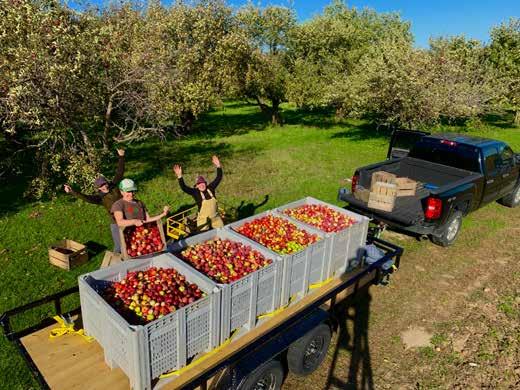

“The golden oysters’ swift spread suggests that the native decomposers are being outcompeted and displaced.”
EDIBLEMADISON.COM 25
considered goods for your everyday. 1925 Monroe St, Madison I gooddayshop.net
—ANDI BRUCE
Thoughtfully
years of Wisconsin Goodness
Late Winter Market at Garver Feed Mill Saturdays, ends April 9


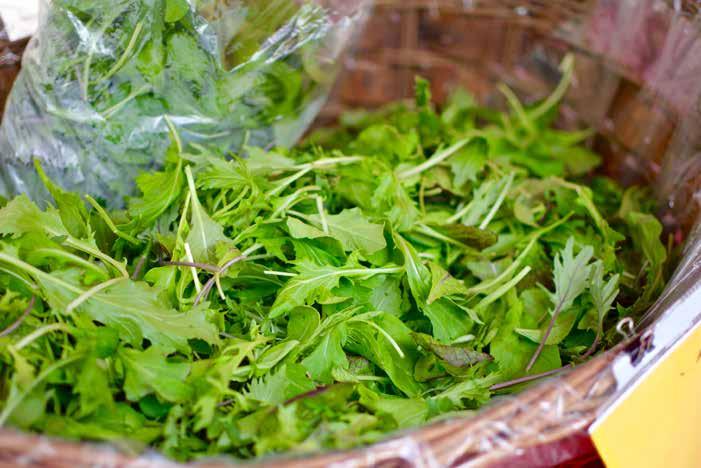
Saturday Market on the Square Weekly, kicking off April 16
Wednesday Market on 200 block of MLK Jr. Blvd Weekly, kicking off April 20
dcfm.org
26 • SPRING 2022
LA COSECHA TART MILPA YELLOW DOG DELI ICE CREAM SOCIAL KINFOLK NOMADIC APOTHECARY GET A TASTE OF THE FOLLOW ALONG @ PANDPMAKESHOP SIGN UP FOR NEWSLETTERS PASTUREANDPLENTY.COM
but
e w a ti i n g of r om er f er hs p r o d u c e t o c o m e r o l l i n g i n . C h e c k o u t t h e c r e a t i v e s w e e t a n d s a v o r y d i s h e s w e ’ r e w h i p p i n g u p w i t h r h u b a r b t h i s s p r
RUDERSDORF
Rhubarb Isn’t Just For Crisp Anymore
c o m i n g o u t o f m y f i e l d s e a c h s p r i n g , i t f e e l s l i k e a c r i m e t o n e v e r d e v i a t e f r o m t h e c l a s s i c s . O n e o f t h e j o y s o f e a r l y s p r i n g
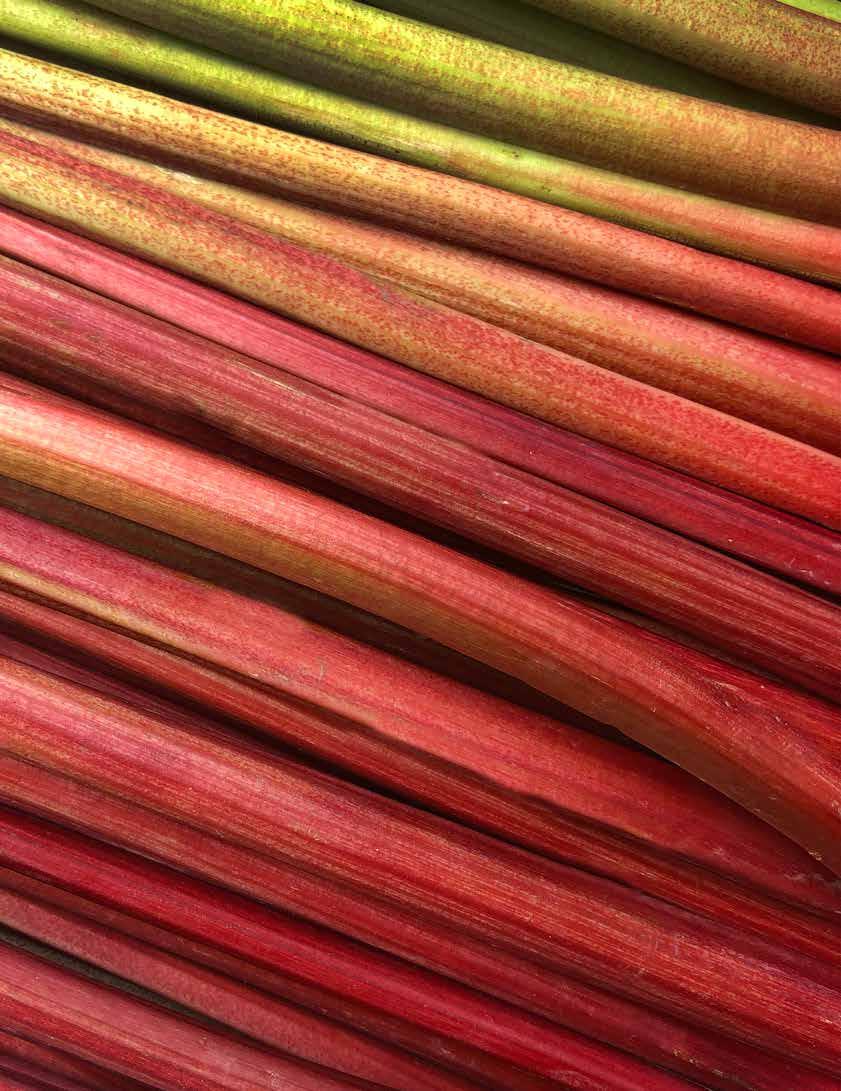 Photos by Sunny Frantz
Photos by Sunny Frantz
get
wrong,
rhubarb crisp
eht xe t ar t i em va a li lba e ot xe p e r i em tn a dn lp
i n g
LAUREN
COOK AT HOME Don’t
me
I love
as much as anyone,
with the piles of rhubarb
c or p s i s
ya lihw
.
Smashed Cucumber, Rhubarb and Spring Herb Salad

Rhubarb can be used for more than just jams and pies—it can even be amazing raw! This recipe is adapted from Paula Wolfert’s iconic The Slow Mediterranean Kitchen. The original recipe is very simple and somewhat tart; here, the classic Chinese technique of smashing cucumbers is applied to rhubarb to temper its acidity.
Serves 6
Prep time: 15 minutes
Cook time: 5 minutes
INGREDIENTS
3 rhubarb stalks, young (peel any stringy outside layers)
1 medium seedless cucumber, ends removed

1 tablespoon kosher salt
2 celery stalks, sliced on the bias into ¼-inch pieces
⅓ cup basil, packed, sliced thinly into strips
⅓ cup mint, packed, sliced thinly into strips
1 tablespoon red wine vinegar
3 tablespoons high-quality olive oil
1 teaspoon honey
½ teaspoon black pepper, or to taste
DIRECTIONS
1. Slice the rhubarb and cucumber lengthwise to create a flat surface so they cannot roll away.
2. Using the bottom of a saucepan or the flat side of a chef’s knife, gently but firmly smash the rhubarb and cucumber until the skin breaks and the inside of the vegetables begins to separate into pieces.
3. Chop the smashed rhubarb and cucumber into small pieces and toss with the salt. Allow to stand for about 10 minutes. Drain the cucumbers and rhubarb, but do not rinse.
4. Toss the rhubarb and cucumber with the celery, basil, mint, red wine vinegar, olive oil, honey and black pepper. Serve immediately.
Recipe by experimental chef Andy Jack of the @ajjack_ Instagram account
28 • SPRING 2022
Rhubarb Chutney
Recipe
by Lauren Rudersdorf
of The Leek & the Carrot
The perfect accompaniment to any charcuterie board or roast meat, this rhubarb chutney made with tart cherries and mustard seeds is sure to spruce up your spring table.

1. In a small saucepan, combine all the ingredients.
2. Bring to a boil over medium heat. Cook for 10 minutes then reduce the heat to medium low. Continue cooking until the rhubarb is soft and the liquid is reduced, about 5 minutes. 3. Serve the chutney on a charcuterie board, on toast with ricotta, or alongside roast pork. Store any extra in the refrigerator for up to two weeks.
INGREDIENTS
cups
½ cup
½ cup
¼ cup
2 tablespoons
¼ teaspoon
Serves 2 Prep time: 5 minutes Cook time: 5 minutes
2
diced rhubarb
diced dried tart cherries
maple syrup
apple cider vinegar
mustard seeds
kosher salt DIRECTIONS
EDIBLEMADISON.COM 29
Basil & Rhubarb Tonic
In 2018, Siren Shrub Company was established with a mission to create space for everyone at the table—no matter their drinking preference. Siren Shrub has been crafting sophisti cated shrub mixers from organic apple cider vinegar, organic cane sugar or maple syrup, and a fruit, root or herb ever since. For this recipe, co-founder Mindy McCord provides a deli cious example of how shrubs allow anyone to craft delicious complex cocktails simply, with or without alcohol.


Serves 2 Prep time: 5 minutes Cook time: 5 minutes INGREDIENTS
2 ounces Basil Siren Shrub 1 ounce lime juice ½ cup chopped rhubarb Pinch of salt 4 ounces gin, optional Tonic water DIRECTIONS 1. In a shaker, muddle the shrub, lime juice, rhubarb and salt. 2. Add ice and the gin (if using) and shake for 30 seconds. 3. Add ice to two glasses, strain the cocktail into glasses, and top with tonic water.
30 • SPRING 2022
Recipe by Mindy McCord of Siren Shrub Company
Beet and Pickled
Rhubarb Panzanella
No matter the season, panzanella is one of my favorite go-to salads—toasted bread, fresh produce, some greens or herbs, and a light dressing are all you need to have a hearty, balanced salad. Here, I pickle the rhubarb and use some of the pickling liquid for the vinaigrette dressing. Balanced with earthy beets, fresh greens and herbs, and tangy goat cheese, this dish is sure to become a staple on your spring table.
Serves 4
Prep time: 30 minutes
Cook time: 60 minutes
INGREDIENTS
1 cup water
1 cup apple cider vinegar
1 cup sugar
1¾ teaspoons kosher salt, divided ½ teaspoon black peppercorns
2 star anise
2 cups sliced rhubarb
3 large beets, well-scrubbed 8 tablespoons olive oil, divided 4 cups cubed sourdough bread
¼ teaspoon ground black pepper
1 teaspoon Dijon mustard
2 cups spring greens (preferably arugula and/or spinach), roughly chopped
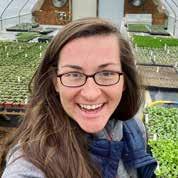
1 cup tender spring herbs (mint, cilantro, dill, basil, scallions), finely chopped 4 ounces goat cheese
DIRECTIONS
1. Preheat the oven to 400 degrees F. Line a large baking sheet with parchment, and set aside.
2. To make the pickling liquid, combine the water, apple cider vinegar, sugar, ½ teaspoon salt, black peppercorns and star anise in a medium saucepan. Bring to a boil over medium-high heat. Cook until the sugar and salt have dissolved, about 5 minutes.
3. Place the rhubarb in a medium bowl or jar. Pour the pickling liquid over the rhubarb and allow it to sit while you prepare the rest of the meal. You can also do this step up to a week ahead and store the rhubarb in the pickling liquid in the refrigerator.
4. Slice off the top and bottom of each beet to create flat surfaces. Set the beets on one of their flat ends and cut each one into 8–12 wedges (no need to peel them). Place the wedges on a parchment-lined baking sheet and drizzle with 2 tablespoons olive oil and ½ teaspoon salt.
5. Roast the beets until tender, about 40-45 minutes.
6. Meanwhile, toss the bread cubes with 2 tablespoons olive oil, ½ teaspoon salt and ground black pepper in a large bowl. Once the bread is coated with oil and spices, spread the cubes on a baking sheet. Toast the bread cubes in the oven until they’re dry and slightly browned, about 15 minutes. Set aside.
7. When you’re ready to prepare the salad, strain the pickled rhubarb and remove the peppercorns and star anise. Reserve 3 tablespoons of the pickling liquid and combine it with the Dijon mustard, the remaining 4 tablespoons olive oil and ¼ teaspoon salt in a small bowl. Whisk until smooth and creamy.
8. Combine the roasted beets, croutons, greens and herbs in a large bowl. Add the dressing and toss to coat. Serve with hefty dollops of goat cheese.
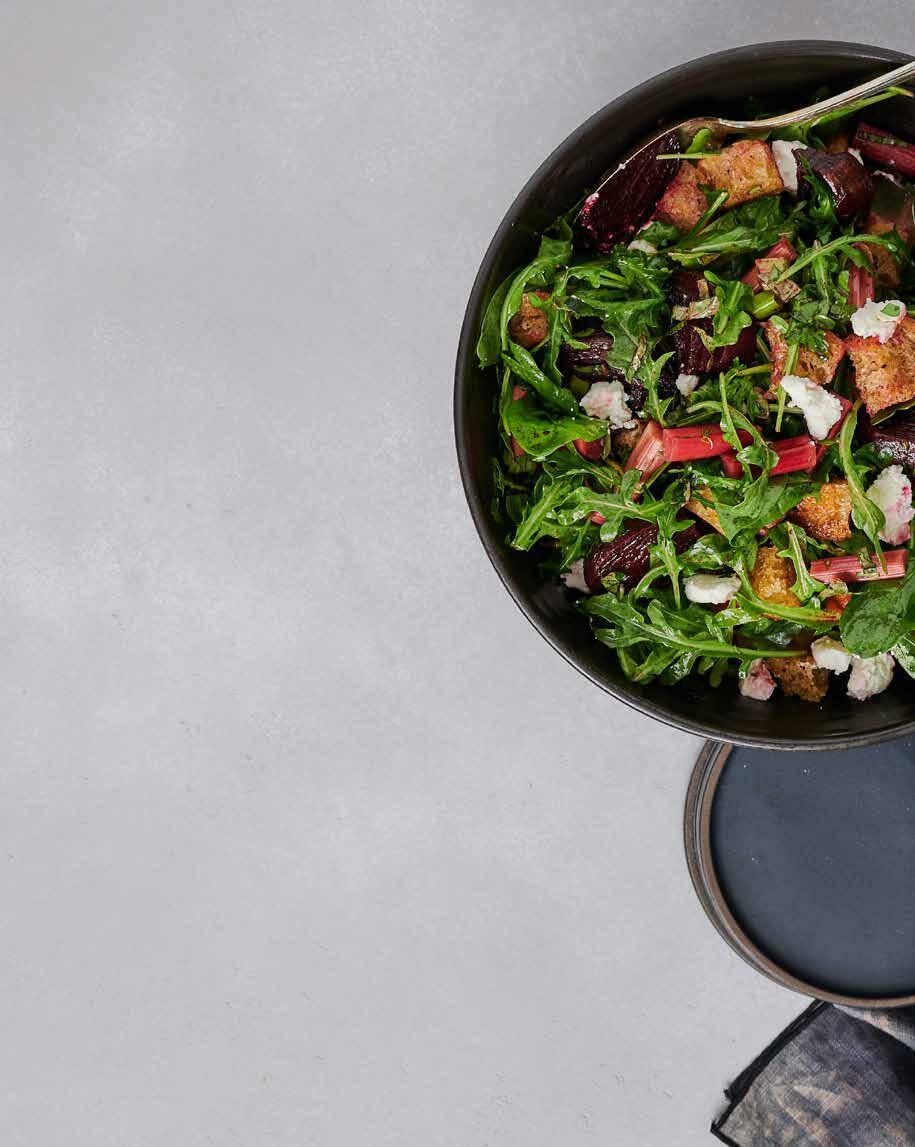
EDIBLEMADISON.COM 31
Recipe by Lauren Rudersdorf of The Leek & The Carrot
Upside-Down Rhubarb Olive Oil Cake


Shannon Berry, the pastry chef behind Pasture and Plenty’s fabulous desserts over the past two years, brings us a real spring treat in the form of an upside-down rhubarb olive oil cake brought to life with caramelized brown sugar, citrusy lemon and tart Greek yogurt.
Serves 6 Prep time: 15 minutes Cook time: 50–60 minutes INGREDIENTS
½ cup unsalted butter ⅓ cup brown sugar
2 cups sliced rhubarb
1½ cups all-purpose flour
½ cup fine cornmeal
2 teaspoons baking powder ½ teaspoon baking soda ½ teaspoon kosher salt 1 cup sugar
2 tablespoons lemon zest 3 eggs
¾ cup full-fat, plain Greek yogurt ¾ cup olive oil DIRECTIONS
1. Preheat the oven to 375 degrees F. 2. Prepare a 9-inch springform pan or round cake pan by buttering it and lining it with parchment paper.
3. Cut the butter into 1-inch squares and place them evenly around the bottom of the pan. Line the bottom of the pan with the brown sugar and rhubarb.
4. In a medium bowl, combine the flour, cornmeal, baking powder, baking soda and salt. Set aside.
5. In a mixer with a paddle attachment, mix the sugar and lemon zest until combined. Add the eggs and mix on high until the mixture is pale and fluffy, about one minute. Add the yogurt and olive oil, and stir until smooth.
6. Add the dry ingredients to the wet ingredients and mix until just combined. Do not overmix.
7. Pour the batter into the prepared pan.
8. Bake for 50-60 minutes or until a toothpick comes out clean.
9. Let the cake cool for 10 minutes.
10. If you’re not using a springform pan, cut around the edge of the cake with a clean knife to release it from the pan.
11. Flip the cake onto a clean surface. Remove the parchment from the top. Serve with whipped cream or ice cream.
32 • SPRING 2022
Recipe by Shannon Berry of Pasture and Plenty and Milpa



EDIBLEMADISON.COM 33
A FairShare-endorsed farm promises









WHY CHOOSE A FAIRSHARE ENDORSED FARM?
Be certified organic or in transition to organic certification;
Grow and produce the majority of the products they offer in their shares on their own farm; and
Demonstrate a high level of customer service to its members year after year. FIND A FARM STEP 1. GO TO STEP 2. SELECT DESIRED SEARCH CRITERIA STEP 3. EXPLORE YOUR RESULTS Pickup location Season Share Type Share Size 1. Map 2. Farm Listing 3. Farm Profile csacoalition.org/farm-search
to: •
•
•
Circadian Organics
Dylan Bruce & Skye Harnsberger
Location: Ferryville, WI circadianorganics.com 608-606-5708
FARM SPOTLIGHTS FairShare Endorsed

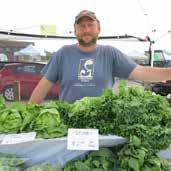

Squashington Farm
Sarah Leong & Patrick Hager
Location: Mount Horeb, WI squashingtonfarm.com (920) 422-1042
farm. We practice regenerative farming, optimizing produce quality and sustainability.
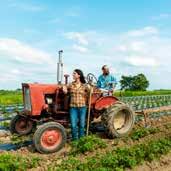


Harmony Valley Farm
Richard de Wilde, Andrea Yoder, & Rafael Morales Peralta
Location: Viroqua, WI harmonyvalleyfarm.com 608-483-2143, ext 2 @harmonyvalleyfarm Established 1984
Offering a long delivery season from May to December along with over 25 years of experience growing for CSA families.
My Fine Homestead
William Meyer & Stacey Feiner
Location: Blue River, WI myfinehomestead.com 608-588-5153
@staceymyfinehomestead Established 1996
Consider our family homestead yours as you eat your way through the summer, or even the whole year, with us!
Roots Down Community Farm
Kyle Thom
Location: Milton, WI rootsdowncommunityfarm.com 608-322-0722
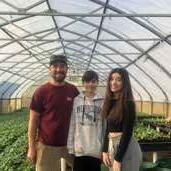
@rootsdowncommunityfarm Established 2007
At Roots Down, our philosophy is rooted in our land, techniques that support healthy soil, and nutrient-dense food. Our passion is growing quality food for our members. In turn, your support and/or involvement as a member completes our CSA community. Our CSA members most commonly praise our shares for the variety, quality, and quantity of produce they receive.

@squashingtonfarm Established 2016 100-member
Small Family Farm
Jillian & Adam Varney
Location: La Farge, WI smallfamilycsa.com 608-625-4178
@smallfamilycsafarm Established 2006
Sprouting Acres
Andy Watson
Location: Cambridge, WI sproutingacres.com 608-469-2319
@sproutingacres Established 2003
Tipi Produce
Beth Kazmar & Steve Pincus
Location: Evansville, WI tipiproduce.com/csa 608-882-6196
@tipiproducecsa Established 1976
EDIBLEMADISON.COM 35
CSA in Mount
offering pre-packed and market-style shares. On farm pick ups and
drop
Horeb
Madison
sites.
We offer weekly and bi-weekly veggie shares as well as coffee, egg, and apple shares. We also offer maple syrup.
Acres is a small community supported agriculture farm located 20 miles Southeast of Madison in between Stoughton and Cambridge.
Sprouting
We are famous for our melons, carrots and much more. As experienced farmers, we provide high-quality produce
over a 24-week season.
represents the
our
@circadianorganics Established 2018 Circadian Organics
third generation at
Driftless, WI
GROWING TEAMS
The start of the Covid-19 pandemic was a reality check for our globalized food system. In most cities the food is shipped in only as fast as it moves out supermarket doors. But when the lockdown orders came, a shudder ran through the food system. Despite businesses all along the food supply chain quickly being designated as “essential,” that shudder was enough to throw a wrench in the gears. Before shelves could be restocked, they were empty. Before the new shipment could come in, retail coolers—and whole warehouses—were empty.
The disruptions of Covid-19 have been the best argument in my lifetime for a localized food system; one of the excellent reasons to support local food is its relative reliability in the midst of crisis. If we want local farms to survive future disruptions, we need to continue supporting them as they work to take care of their employees. To keep that support, it’s important that we understand the pressures local farms face.
As our farm—Circadian Organics—has grown, we’ve learned that one of the difficulties in developing a sustainable vegetable business is finding employees. Dr. Alexia Kulwiec, Director of University of Wisconsin-Madison’s School for Workers, put the problem facing local producers into stark contrast: “When you’re talking about local vegetable farms—more specifically organic farms—their big issue is a difficulty in finding and keeping qualified labor…as opposed to when I study farm labor issues on more industrialized farms, where the working conditions are really more the problem.”

Growing Our Farm, Building Our Team
Our first few years of farming were spent reinvesting nearly everything back into the dream of farming full-time, while relying on off-farm jobs for our income. Still, even with off-farm jobs we were providing almost all the labor ourselves. But as we look to expand our CSA and serve even more of our community, we are wrestling with the same question that much of our food system has struggled with over the past two years: how do we find reliable and experienced labor, and pay a competitive wage, while remaining affordable in a crowded market?
Last year, we recognized we were outgrowing our ability to do most of the labor ourselves, so we contracted for our first full-time seasonal worker. The search process was easy, and the interview was even easier—the employee was reliable, hardworking and could solve any problem as well as we could. Sounds too good to be true in this labor market, right?
That’s because the new team member was my sister, who knows this farm like the back of her hand. But alas, next year she’s on to bigger and better (or at least more reliable and institutionalized) opportunities. You know the kind—with retirement accounts, insurance and paid vacation. These employee benefits are basic and critical, yet they currently seem daunting and unobtainable to our 5th year farm.
This year we likely won’t be so lucky with such an easy hiring process. We’ll be joining many other regional farms searching for
by Dylan
36 • SPRING 2022
Bruce
Local Vegetable Farms Work to Find Reliable Employees in a Post-Covid Era
employees. We’re lucky that we’ll only be filling two part-time positions. Many other farms also have management positions to fill. And from what I learned at a recent vegetable grower meeting on labor management hosted by Fairshare CSA Coalition and other regional organizations, many farms are finding themselves filling those positions on a seasonal basis.
Local Farm Labor Crisis

The local farm that supplies so many delicious, nutritious, sustainable vegetables to you fills not only their field labor positions, but also key management roles on a seasonal basis. That’s worth stopping to think about for a moment. What other services would we be comfortable saying that about?

As Barbara Kingsolver said in Letters to a Young Farmer, “If we’re lucky, we’ll see a doctor only a few times a year, and a lawyer even less. But we need farmers every single day of our lives, beginning to end, no exceptions.”


We wouldn’t be as comfortable at the offices of doctors or lawyers if we knew that all the supporting staff was hired fresh every year. The crisis of local food systems is not just a problem of needing more farms. Sustainability of a farm is more than its bottom line or its ecological impact.


How do we as farmers, retailers, chefs and eaters collaboratively create a sustainable local food economy that supports a robust farm labor market in addition to a satisfying array of local producers? That question merits a serious and transparent discourse about the tough realities of farm labor.
Finding reliable labor was already tough, but the pandemic has exacerbated the problem.
Left page: Skye and Dylan were responsible for the majority of the labor for the first few years after starting Circadian Organics, a common pattern for new vegetable farms.
EDIBLEMADISON.COM 37
Your Partner for All Seasons Your Partner for All Seasons Ag Real Estate Financing Ag Real Estate Financing ll Equipment Loans Equipment Loans ll Operating Lines of Credit Operating Lines of Credit sbcp.bank/Ag berkeandbenham.com Wild Halibut & Salmon season is here! 608.286.1000 1925 MONROE ST. MADISON
Photo courtesy of SeedLinked/Windborne Media
Above: Skye Harnsberger pots up peppers during the early season. Extending the seasonality of employment is one way farms improve employee retention.
Right: Transplanting peppers in a no-till production system at Circadian Organics. Sometimes methods that are beneficial for soil health or product quality can increase labor requirements.
Local Farms Seek Solutions
In response to an increasingly difficult labor market, some growers at the meeting shared plans to downsize their operations so the owners could handle all the work themselves because they simply couldn’t find affordable labor. Others were scaling up to be able to afford more employees, or more mechanization, and better balance the workload. Still others were raising prices specifically to be able to afford to hire more management positions.
Still other growers were considering specializing in wholesale categories and focusing on contract or H2A visa migrant labor (the program that allows growers to hire migrant labor on special visas when they find the local labor market lacking). The few farmers in our area I’ve seen using the programs managed it very well. And if one thing is well established in the Wisconsin farm labor conversation—thanks to the dairy industry—it’s that reliable and skilled labor can save farms.
But relying on migrant labor doesn’t always go well due to weak protections for agricultural labor. Even local farms with the best working conditions for their H2A crews are then more susceptible to the same Covid-scale interruptions that have plagued the corporate food system in the last two years.
While finding and affording labor is already a difficult task, the other side of the coin is that it can be difficult to retain quality
employees in a seasonal industry where many of the positions are temporary. To address this issue, some farmers have added yearround production or more storage crops to support core staff through the winter. Beth Kazmar, one of the proprietors of Tipi Produce—a long-time Madison-area farm—shared some tips from her decades of farming (see the sidebar on page 39).
Local Growers Strive to Become Better Employers

The desire to create a balanced work environment for themselves and their employees is an ongoing conversation among small farms. Although it’s unfortunately common for many growers to work absurd hours in the early years of a business, it’s become increasingly important to many growers to set reasonable work hour limits, especially for their employees. In fact, regional non-profit Fairshare CSA Coalition has worked with UW-Madison and experienced farmers to develop programming for area growers focused on best practices for employment. The series is literally called “Becoming the Employer of Choice,” and includes topics ranging from training and safety programs, to motivating employees. Like every other aspect of the farm, growers have to be a jack-of-all-trades. Human resource management, many of us are learning, is just as important as mechanics and production.
Growers are generally transparent about the perks they’re able to offer employees (primarily the free-all-you-can-carry-vegetables kind of perks, not the insurance and retirement type of perks). In particular, the ability to offer housing to employees seems to make a big difference, as applicants often come from far away. Most growers I spoke to offered wages close to their county’s living wage, but despite paying well above minimum wage, they were having significant difficulty finding interested employees.
AVERAGE WAGE FOR AGRICULTURAL WORKERS
According to the US Bureau of Labor Statistics, the average wage for agricultural workers nationally is $13.89 per hour, which works out to $28,900 annually. Wisconsin lags right behind the national average, at just over $27,000. That makes sense, given that Wisconsin’s cost of living is about 95% of the national average. All the farms who shared their wages were right in that range, and some farms even shared how they always use their county’s living wage as a starting point for new employees. Yet despite being in the right range in theory, almost all of the farmers were having a hard time finding labor.
38 • SPRING 2022
Photos courtesy of Skye Harnsberger/Circadian Organics
$27,000 $28,900 NATIONALLY
WISCONSIN IN THE
U.S.
Unfortunately, most farmers are stuck between a rock and a hard place when it comes to competitively compensating employees while keeping their prices affordable. As one grower put it, when the local Culver’s is paying $15 an hour, it’s tough to find reliable employees for less than that. Many farmers—like other businesses along the food supply chain—are raising wages to find employees. But with tight margins, there’s only one way that works, and that requires raising prices.
Local Eaters Supporting Farms
Fortunately, another benefit of community-based businesses, besides resilience to crisis, is a direct line of communication to their customers. Early reports suggest that customers from many farms are accepting the higher prices needed to sustain farms. Robyn Calvey of Park Ridge Organics, reported that she raised prices slightly—with full support of her customers—and as a result was able to pay herself and her employees better, and “even start saving some money.”
For many of us worried about the effect even a slight price change might have on our markets, it’s encouraging news. Like everything in local food, creating a market that supports sustainable farm labor will be a communal effort. As Dr. Kulwiec said, “A lot of the tension specifically on small organic farms is around what kind of price they can charge versus the cost of inputs—whether it’s labor or seeds or something else. The problem often stems from the fact that the market or consumer demand is often paying less than the food is worth.”
Solving the labor issues in the larger food system might require a resuscitation of our antitrust laws. Dr. Kulwiec explains that the price discrepancy between what food is worth and what people pay is largely the result of a century of “targeted policy,” much of it exempting agricultural labor from basic federal protections such as overtime pay and workers compensation, creating an environment that corporate industrialized farms can exploit. “If you are competing with the larger farms who have not had to apply the same labor protections as other industries, small local guys can only raise their prices so much and still compete. Even if they farm with greater values, those policies still impact them as well…More enforcement of antitrust and having less of these huge corporate farms would go a long way in bringing more rational prices in our food system.”
Solving the labor issues in our local food systems is no less of a gargantuan task, but it is of a different nature. Sure, there are distinct policy needs for farmers around issues such as access to insurance or H2A visa processing. But the most essential change is one that is already underway: the revaluation of local food and farmers, powered by the support of eaters like you. Not only in terms of what we pay for our food, and how that supports farms and their employees, but also how we view the farmer and farmworker as professionals. It’s good work and highly skilled too. If we can value it in esteem—if not in economics—just as highly as the lawyer and doctor, maybe we can open the door for new farmers and farm workers to thrive and grow.
LOCAL FARM ADDRESSES PROBLEM OF SEASONAL EMPLOYMENT

When Tipi Produce of Evansville grew their business to the point they knew they needed to sustain long-term employees, they began to put away storage crops that a few core employees can wash and deliver throughout the winter. This allows them to keep some of their best employees, who get to know the farm better and take on more responsibility over time, which in turn leads to better work-life balance. “Once you have returning employees, that’s when you can have shared management,” farmer Beth Kazmar said.
Kazmar said that another way Tipi deals with seasonality has been to share employees with nearby businesses that have different seasonal peaks. Other farmers have echoed this, citing businesses such as orchards and even libraries. Tipi has found that it works well to allow returning employees to work four days a week on the farm and one at a different business, so that during the off-season the employees could increase their hours at the other job.
However your local farmer is solving the problem, it’s important to remember to support them in the off-season just as much as when the farmers market is bustling and farmers’ booths are piled high.
EDIBLEMADISON.COM 39
MAKING PASTA THEIR OWN


From just four common ingredients—flour, egg, oil and salt—chefs craft myriad shapes and sauces to get us through the hardest time of the year for local food. House-made pasta offers up the comfort we seek. Think hearty ragus or carbonaras for sustenance or for a little hint of spring, pasta and early season greens fresh from the hoop house while we anxiously await overwintered spinach, ramps, asparagus and sorrel that herald the beginning of the growing season across our region.
In our first back-of-the-house feature since the pandemic, we’re showcasing the work of three chefs (many in the Madison area) who include outstanding housemade pasta dishes on their menus. Kyle Beach from Homecoming in Spring Green, Giovanni Novella of Bar Corallini and Sean Pharr of Mint Mark, both in Madison. They gave us a peek behind the scenes to show us their technique and share their rationale for house-made pasta. To that we say, “Yes, please.”
Located in a white former schoolhouse in the center of Spring Green, Kyle Beach is learning his way with hyper-local pasta made with flour milled by Mead owlark Organics using local grain.





“When I started making pasta I was using Meadowlark’s all-purpose flour blended with double zero flour that I’d sourced from elsewhere, but now Meadowlark has a new flour called Snowbird. It’s 100% high protein offers a little more elasticity and it’s way easier to handle and it’s more consistent when we’re cooking it.” Kyle says.
“In the hard season of late winter/spring we’re leaning into more of our local proteins sourced from Enos Farms, Cates Farm and Seven Seeds, with cellared roots and fresh local greenhouse greens from nearby farmers.”

In the sunny open-air kitchen, Kyle and his team are constantly experimenting with a rotating menu. This winter they created an Italian/steakhouse vibe, and in February did a pop-up concept as Little Tiger, featuring the flavors of Asia, including ramen, dumplings and drunken noodles. Come spring Homecoming will return.
“I’m just curious and hungry, and I’m no pasta expert yet, but we’re having some good success,” Kyle says.
Top: Pasta on the rack, made daily.
Bottom: Pasta in small batches.
Below: A hearty ragu.
 Photos courtesy of Homecoming
Photos courtesy of Homecoming
HOMECOMING
EDIBLEMADISON.COM 41 PLANT-BASED SKIN+HAIR CARE Luminous Rose luminousrosebeauty.com Use code: EDIBLE for 15% off Maria Henry Founder + Formulator SMALL-BATCH ❁ ARTISAN LOCALLY MADE SKINCARE FARM TO FORMULATION









42 • SPRING 2022
Photos by Nicole Peaslee
< Top row, left to right: Chef Giovanni pulling a sheet of egg pasta from the machine before laying down some flour so that he can fold the pasta into a roll to precisely cut tagliatelle.
Middle row: A twirl of fettuccine, a pile of hay & straw (paglia e fieno) and a selection of pasta shapes showing cappellini, tagliolini, fettuccine, tagliatelle, pappardelle, ricotta gnocchi.
Bottom row: Sheets of beet and red pepper pasta are cut to begin the process of making decorative garganelli (with arugula pasta) that will be stuffed with ricotta. The ridges help bind the sauce to the pasta.
Below, left: Dreamy pillows of agnolotti filled with butternut squash and braised sage.
Below, right: Chef Giovanni forming small tortellini. Cappelletti pasta stuffed with ricotta,smoked buffalo mozzarella, parmigiano, stracciatella.

Chef Giovanni Novella grew up along the Gulf of Naples, Italy and by our good fortune, landed in Madison at Bar Corallini, part of the Food Fight Group. He’s trained in Italian pastry but he holds a deep passion for pasta. “I could make fresh pasta all day,” he declares as he throws flour along a freshly rolled sheet of pasta.

In Italy, just one millimeter changes the name of the pasta and how it should be served. Each region has its own signature pasta. Currently, the restaurant regularly offers six varieties of pasta, including gnocchi.
He offers this advice to the home chef making pasta: “I cook pasta three quarters of the way, then the last quarter of the way, I finish the pasta cooking in the sauce. This helps the sauce connect to the noodles, so that butter or cream aren’t required to bind the pasta to the sauce. This process marries the flavors and creates harmony to the dish”
BAR CORALLINI
EDIBLEMADISON.COM 43





44 • SPRING 2022
Photos by Nicole Peaslee
MINT MARK




Just a hop, skip and a jump down the road from Bar Corallini, Sean Pharr at Mint Mark also holds a pas sion for making pasta from scratch. Pasta is regularly on the menu with rotating specials to highlight seasonal ingredients.

< Top: Chef and owner Sean Pharr of Mint Mark makes pasta in the basement kitchen of Mint Mark


Center, left to right: Spaghetti is made to order and finishes cooking bathed in carbonara sauce and then served with a sprinkle of Wisconsin Pecorino Romano.
Bottom: Pharr searched far and wide for his own chitarra (pronounced kay-tarrah), a device created in the Abruzzo region of Italy, that is used to cut pasta to the perfect width for spaghetti carbonara.
EDIBLEMADISON.COM 45 Crave-worthy grass fed meats raised in south central Wisconsin, Home Delivery Every Week ・ Brodhead, WI ・RiemerFamilyFarm.com delivered directly to your door. Raised and packed by our family, for yours. TAKE A CHEESE CLASS FROM THE BEST twelve south carroll, on madison’s capitol square • 608.255.2430 fromagination.com
The trademarks and certification marks displayed are the property of their respective owners and are displayed herein for demonstration and informational purposes. Edible Communities and these entities are not affiliated.

46 • SPRING 2022
edible Communities | SIGNATURE SECTION
IN LABELS WE TRUST
How food certification labels, seals and standards can help eaters make better choices
STORY BY ELENA SEELEY, FOOD TANK CONTENT DIRECTOR
Danielle Nierenberg, Food Tank president, contributed to this article.

Even before the pandemic, choosing what to eat was difficult. What’s healthy? What’s not? Do workers get a fair wage? What’s better for the planet? For eaters looking to purchase products that are fairly traded or BIPOC owned, it can feel exhausting to find delicious foods from producers they believe in.
Certification labels and standards can be useful and neces sary ways to help consumers, but they’re often confusing. “Un fortunately, the burden is always on the consumer in terms of evaluating the veracity of the label, doing the research to see whether the information on these labels is properly supported and accurate,” Brian Ronholm, director of food policy at Con sumer Reports, says.
Focusing on one issue helps, says Jerusha Klemperer of FoodPrint, an organization that educates consumers about food production practices. Decide which issue you’re most passionate about and look for a label that upholds those standards. Labels can help increase transparency and provide insight into how food was produced. They can help eaters vote with their wallets for food choices that support the environment, climate solutions, animal welfare, workers’ rights, and healthy and sustainable diets. But even conscientious eaters can get overwhelmed by the num ber of choices they face.
Choosing certified labels is a way to avoid empty claims, Klemperer says. But not all certification processes are created equal. Klemperer advises consumers to “do the research before you get to the store.”
PROTECTING WORKERS
In 2020, the World Economic Forum/Ipsos found that 86 percent of people want a significant change towards a more equi table and sustainable world post-pandemic.
Standards from the food sector are working to eliminate forced and child labor, improve workers’ conditions, promote gender equity and ensure better pay. Many fair-trade companies are helping growers shift to environmentally sustainable practices.
“While not a silver bullet, the Rainforest Alliance certification is designed to provide methods and a shared standard for creat ing a more transparent, data-driven, risk-based supply chain…to make responsible business the new normal,” says Alex Morgan from the Rainforest Alliance.
For foods from the United States, it’s more difficult to find companies upholding fair working conditions.
“Farm employees are still not equally protected under the Fair Labor Standards Act and do not have a federally protected right to a weekly day of rest, overtime pay, sick time, collective bar gaining rights or even the right to a federal minimum wage on small farms,” says Leah Penniman of Soul Fire Farm, an AfroIndigenous centered community farm in New York.
Rosalinda Guillen, founder of Community to Community, says the Food Justice Certified label by the Agricultural Justice Project (AJP) is the most comprehensive label for protecting workers. “We call it the gold standard,” says Guillen, who has provided input on AJP’s certification since 2000. Her BIPOC-
EDIBLEMADISON.COM 47
Visit ediblecommunities.com for more photos and podcasts
led organization fights for better farm working conditions. She trusts the label because farm workers were deeply involved in setting the stan dards from the beginning.
Soul Fire is one of just six farms using Food Justice Certified. And it's advocating for the Fairness for Farm Workers Act. “The exploitation of farm labor is so deeply entrenched in the DNA of this nation that it can feel daunting to confront it, and yet we must,” says Penniman.
IS ALL NATURAL MEANINGLESS?
One of the most familiar labels is all natural. It sounds good—even healthy—but it’s an empty marketing tool.
Klemperer says, “Ignore it.” Look for labels like USDA Certified Organic, which is two decades old. According to the Economic Re search Service of the U.S. Department of Agriculture, organic foods can be found in almost three out of every four conventional supermarkets.
To meet USDA standards, foods must be grown in soils that have not been treated with artificial fertilizers and pesticides for at least three years. And organic farmers cannot plant genetically modified organisms (GMOs).
Newer labels, like the Regenerative Organic Certified (ROC) label, encourage farmers to further improve animal welfare, fairness for farm workers and soil health. The label’s three-tiered system allows producers to earn bronze, silver or gold certification to incentivize action.
This label is also designed to be adaptable. “As science and culture morph and change, we can incorporate that into a flexible or dynamic stan dard that can adjust at that level,” explains Jeff Moyer, CEO of the Rodale Institute, a nonprofit group dedicated to growing the organic movement.
NON-GMO LABELS DEMYSTIFIED
Many growers avoid GMOs without using USDA Certified Organic practices. GMO products are derived from plants and animals, the ge netic makeup of which has been altered, often to create resistance to pes ticides, herbicides and pests.
Consumers can look for the Non-GMO Project Verified label, which indicates that produce or products containing fruits and vegetables are not produced with GMOs. For meat and dairy products, this label means that animals were fed a non-GMO diet.
In 2022, products containing GMOs must use a new Bio-Engineered label from the USDA. But some non-GMO advocates argue this label doesn’t go far enough. Many products derived from new modification techniques, including those having undergone CRISPR gene editing and crops meant for animal feed, will be exempt from the label.
HUMANE LABELING
“I think everybody cares about animals and nobody wants to see ani
mals suffer unnecessarily,” says Ben Goldsmith of Farm Forward, a non profit striving to improve farm animal welfare. It can be easy for us to imagine ideal scenarios—healthy animals that are free to roam in open pastures—but unfortunately, Goldsmith explains, few animals are raised this way.
According to the nongovernmental organization, Food and Water Watch, 1.6 billion farm animals live on 25,000 factory farms, or con centrated animal feeding operations, in the U.S. These animals face over crowded and stressful conditions and are regularly subject to physical alterations like tail docking and beak clipping.
To avoid meats from animals subject to inhumane practices, look for the Certified Animal Welfare Approved (AWA) label. Farmers and ranch ers qualifying for certification cannot use cages, must provide access to pastures and must ensure animals are treated humanely when they are bred, transported and slaughtered. Producers may also add a Certified Grass-fed label to this certification, meaning animals were fed a 100 per cent grass and forage diet. Goldsmith says he appreciates the AWA label because it helps to “support and encourage small producers.”
Another label is Certified Humane from Humane Farm Animal Care. Minimum space allowances and environmental enrichment must be pro vided for animals raised under Certified Humane standards. That encom passes the treatment of breeding animals, animals during transport and animals at slaughter.
These labels are better for animals—and farmers can find them more rewarding. “You get to see animals exhibit natural behaviors,” says Ron Mardesen, a livestock farmer for Niman Ranch, a beef, pork and lamb company with Certified Humane products.
For products like eggs, terms like humane raised, free range and hor mone free sound good, but lack a clear definition. The U.S. prohibits the use of hormones in all poultry, veal, eggs, bison and pork production, so claims of hormone free don’t mean much.
AWA, Certified Humane and USDA Certified Organic labeling stan dards prohibit the use of antibiotics and synthetic hormones in animal production. Consumers looking to buy meat products raised without these inputs should buy certified labels.
SOMETHING FISHY
The seafood sector is rife with labor exploitation, overfishing, eco system damage, fraud and intentional mislabeling. Mark Kaplan, of the company Envisible, calls the challenges in the industry “appalling.”
Envisible works to make supply chains more transparent and equi table. Using blockchain, the company can trace a product from a fishing vessel all the way to the supermarket. Data entered at every point along the supply chain cannot be changed, helping eliminate fraud.
Kaplan recommends consumers look for the Global Seafood

48 • SPRING 2022 edible Communities | SIGNATURE SECTION ediblecommunities.com
continued



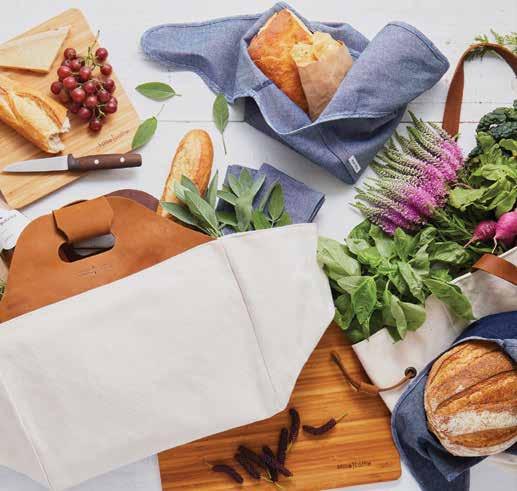


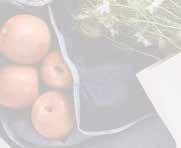

EDIBLEMADISON.COM 51 Go
with millielottie.com Made in San Francisco MARKETPLACE edible Communities To advertise in Edible Communities' Marketplace contact: tracey@ediblecommunities.com
from farm to table and beyond
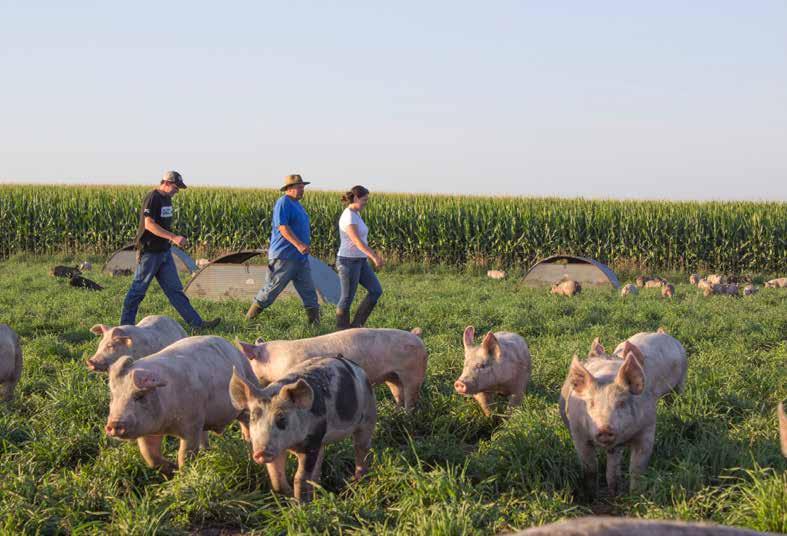
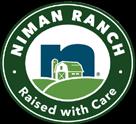





Niman Ranch and our network of U.S. family farmers and ranchers raise livestock HUMANELY and SUSTAINABLY to deliver the finest tasting meat in the world. @nimanranch | nimanranch.com LEARN MORE Follow us @panoramameats Find us at panoramameats.com/wheretobuy // Committed to the preservation of 1,000,000 acres of native U.S. grasslands • Truly Grass-fed and Grass-finished Beef • Always Organic • Restoring important bird habitats through responsible grazing methods Learn more about our partnership with the
and our
to regenerative agriculture. Scan to learn more.
National Audubon Society
commitment
Alliance’s Best Aquaculture Practices label, a third-party certification that addresses environmental health, social wellbeing, food safety and animal welfare along the aquaculture supply chain.
The Fair-Trade Certified seal, a label given to various species of fish that meet certification requirements, is also helpful. Certification focuses on supporting economies, improving working conditions and protecting ecosystems.
The Monterey Bay Aquarium Seafood Watch is a tool to help guide more sustainable choices on a case-by-case basis. Its website allows users to search by species to understand the best options and alternatives, and which species to avoid.
CARBON LABELING
According to Nature Food, more than one-third of greenhouse gas emissions can be traced to the food system. Many eaters are seeing this connection between global agriculture and the climate crisis, and they want to purchase more climate-friendly food. Some businesses are seeing labels as part of the solution.
Numi Organic Tea has Climate Neutral Certification. It helps com panies measure, offset and reduce their carbon emissions to reach carbon neutrality—a balance between the amount of carbon emitted into and absorbed by the atmosphere. Climate Neutral also tries to account for the entirety of the supply chain—emissions caused by on-site facilities, pur chased electricity, employee transit, shipping and transporting materials.
Instead of specific products, Climate Neutral certifies entire brands once they achieve zero net carbon emissions for one year and requires them to commit to emission reduction targets annually. Jane Franch of
Numi prefers this approach. She believes that allowing companies to la bel individual products as carbon neutral “can give a green halo to that company without necessarily committing to or investing in enterprise level change.”
Numi plans to print on each tea box the precise estimate of green house gas emissions associated with it—something Oatly and Quorn are currently also doing with their packaging.
UNWRAPPING LABELS
Emily Moose, executive director of the nonprofit A Greener World, argues that it’s important for consumers to continually ask for sustainable products. “It can be easy to just say, ‘Oh, there’s too much, it’s too over whelming, it might not matter.’ But that’s really not true,” says Moose. “That only benefits an opaque food system and practices that will never improve.”
If you care about workers, speak with store managers about carrying products with AJP’s label. For environmental concerns, email store buy ers to let them know you’re happy they purchase organic or local products but wish they had more.
And eaters don’t always need labels to do the right thing. BIPOC and women-owned businesses have been disproportionately impacted by the pandemic. Consumers can look to local farmers’ markets or Yelp and Google for businesses with a Black-owned or women-led badge.
Ultimately, labels and certifications are helpful tools, but don’t tell us everything about how food is produced. As eaters, though, we have the op portunity, every time we pick up a fork, chopsticks or a spoon, to choose more economically, socially and environmentally just food systems.
Closing Thoughts From Our Founder
Thank you for joining us on these pages, the fourth in a series of thought leadership pieces from Edible Communities. We would like to send a special thanks to our partners for this issue, Elena Seeley, Danielle Nierenberg and the team at Food Tank, who made this story possible.
Exploring, investigating and changing our food system have been guiding principles of Edible Communities since we first began. And while I know our work has impact and is valued, there is still a lot more to do! In the case of labeling, for instance, it would be so easy if there were one label, one certification, one set of guidelines, one choice to make when it comes to our food, but alas, only one option would allow a broken food system to stay broken. Therefore, we hope you find this thought-provoking and thorough coverage on the topic informative and useful.
As you are reading this, Edible Communities is fully into our 20th anniversary year as a media company. We are approaching 100 titles through out North America and reach over 20 million readers each year. Those are statistics we don’t take lightly. We are grateful for you, dear readers, who help guide and sustain us. And if you’re an Edible reader, we feel you will enjoy being a Food Tank reader as well. Part of its mission statement says: “We aim to educate, inspire, advocate and create change,” and it certainly does that. I encourage you to visit foodtank.com, to listen, learn, join and be part of the conversation.
Tracey Ryder, Co-Founder & CEO Edible Communities
EDIBLEMADISON.COM 53
For more on this story, visit ediblecommunities.com edible Communities | SIGNATURE SECTION
THANK YOU TO OUR ADVERTISERS!
Please support the following businesses to experience the best local, seasonal, and sustainable products and services in the region.
GROCERY STORES & FARMERS MARKETS
AUTHENTIC SUPERIOR P.O. Box 24, Herbster 715-774-3849 authenticsuperior.com
DANE COUNTY FARMERS’ MARKET 3241 Garver Green, Madison 608-455-1999 dcfm.org
LARK MARKET 56 S. Main St, Janesville 608-563-1850 larkmarket.store
VIROQUA FOOD CO-OP 609 N Main St, Viroqua 608-637-7511 viroquafood.coop
WILLY STREET CO-OP
Willy East: 1221 Williamson St, Madison 608-251-6776
Willy West: 6825 University Ave, Middleton 608-284-7800
Willy North: 2817 N Sherman Ave, Madison 608-709-5445 willystreet.coop
BUSINESS & CONSUMER SERVICES
STATE BANK OF CROSS PLAINS
Locations across Dane and Rock counties sbcp.bank
UPSTART Supported by WARF 614 Walnut Street, 13th Floor, Madison 608-960-9850 https://bit.ly/3HeCBDq WELLNESS
KOSA WELLNESS SPA & RETREAT 3241 Garver Green Suite 260, Madison 608-999-7558 kosaspa.com
LUMINOUS ROSE hello@luminousrosebeauty.com luminousrosebeauty.com R’OUJIE WELLNESS facebook.com/keenasfa
TOURISM
BCYCLE 312 N. Third St, Madison madison.bcycle.com
THE HISTORIC FORTNEY 100 N. Main St. Viroqua 608-638-3000
MADISON EATS 608-628-8927 madisoneatsfoodtours.com/
OLBRICH BOTANICAL GARDENS 3330 Atwood Avenue Madison, WI 53704 olbrich.org
VISIT SHEBOYGAN 920-335-0060 visitsheboygan.com
KITCHEN & TABLETOP
GOOD DAY SHOP 1925 Monroe St #120, Madison 608-720-1116 gooddayshop.net
WISCONSIN CUTLERY & KITCHEN SUPPLY 3236 University Ave, Madison 608-204-0560 wisconsincutlery.com
FARMS & FOOD GOODS AMBIOCHAR 269-663-2224 ambiochar.com
DRIFTLESS TANNERY 608-669-5608 driftlesstraditionaltannery.com EASTSIDE CAKES eastsidecakesmadison@gmail.com eastsidecakes.com
EMBARK MAPLE SYRUP (BY B&E’S TREES) 1201 N. Main St, Viroqua 608-799-7380 embarkmaple.com
LANDMARK CREAMERY 6895 Paoli Rd, Belleville 608-848-1162 landmarkcreamery.com ROOTED International Lane #200, Madison 608-240-0409, 2702 www.rootedwi.org/
RIEMER FAMILY FARM W2252 Riemer Rd, Brodhead 608-897-6295 riemerfamilyfarm.com
VOSS ORGANICS 1622 Mayfield Ln, Madison 608-556-8143 www.vossorganics.com/
FOOD, AGRICULTURAL & SUSTAINABILITY ORGANIZATIONS


FAIRSHARE CSA COALITION 303 S Paterson St, Suite 1B, Madison 608-226-0300 csacoaliton.org GLOBALTRANZ CONSULTING (MANUEL ALTÚZAR) P.O. Box 46323, Madison, WI 53744 608-354-9521 facebook.com/dairystaffingservices
EVENTS
WINDING ROADS ART TOUR Saturday & Sunday, June 4-5, 2022 windingroadsart.com
FOOD & BEVERAGES
BERKE & BENHAM 1925 Monroe St, Madison 608-286-1000 berkeandbenham.com
BRIX CIDER 119 S 2nd St, Mount Horeb 608-437-2749 brixcider.com
THE COOPERS TAVERN 20 W. Mifflin St, Madison 608-256-1600 thecooperstavern.com
DRIFTLESS PROVISIONS 1201 N. Main St., Viroqua driftlessprovisions.com
EMMI ROTH CHEESE 657 2nd St, Monroe rothcheese.com
FROMAGINATION 12 South Carroll Street, Madison 608-255-2430 fromagination.com
GIANT JONES BREWING 931 East Main St, Madison 608-620-5172 giantjones.com
ISLAND ORCHARD CIDER 12040 Garrett Bay Rd, Ellison Bay 920-854-3344 islandorchardcider.com
LARK 60 S. Main St, Janesville 608-563-1801 larkjanesville.com
LET’S SHINE COFFEE 815 Water Ave, Hillsboro 608-479-2041 letsshinecoffee.com
LOMBARDINO’S 2500 University Ave, Madison 608-238-1922 lombardinos.com

MADISON SOURDOUGH 916 Williamson St, Madison 608-442-8009 madisonsourdough.com
NESSALLA KOMBUCHA 3233 Garver Green, Madison kombucha@nessalla.com nessalla.com
PASTURE & PLENTY | P&P MAKESHOP 2433 Old University Ave, Madison 608-665-3770 pastureandplenty.com
PIZZA BRUTTA 1805 Monroe St, Madison 608-257-2120 pizzabrutta.com
SUNN CAFE 201 E Main St, Mount Horeb 608-437-7866 sunncafe.com
TELSAAN TEA 209 E. Main St F, Mount Horeb telsaan.com
WONDERSTATE COFFEE 27 W Main St, Madison | 608-283-9478 1201 S Main St, Viroqua | 608-638-7701 117 Rittenhouse Ave, Bayfield | 715-913-0330 wonderstatecoffee.com
PETS
THE PETINARY CLINIC 1014 Williamson St, Madison 608-255-1239
54 • SPRING 2022
This
d uff
is the g



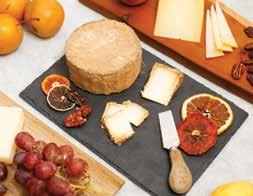

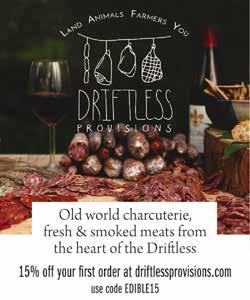



EDIBLEMADISON.COM 55 6895 Paoli Road, Paoli, WI 53508 Uncommon milk, beautiful cheese. LANDMARKCREAMERY.COM The Petinary Full Service Vet Clinic! PETINARYMADISONWI.COM 608-255-1239 1014 Williamson St, Madison,WI

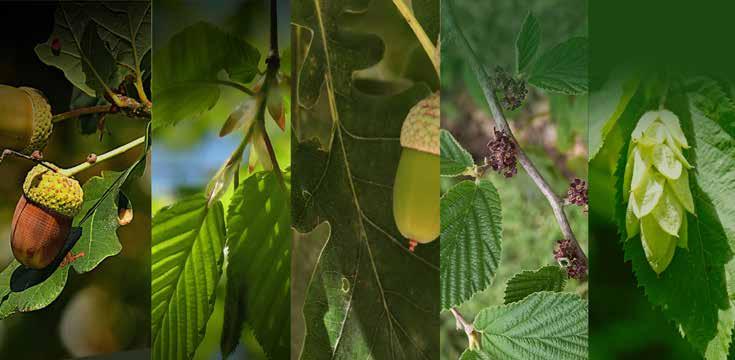
3330 ATWOOD AVE, MADISON LEARN MORE AT OLBRICH.ORG follow us! Love To Learn? Upcoming Classes Include: Benefits of Native Plants: An Introduction • March 22 Wisconsin Spring Wildflowers in Woodlands and Prairies • April 7
Plants for Butterflies and Moths • April 23
Native and Nativar Trees for Home Landscapes • May 5
Plants for Shady Areas • May 28 THE PLANT SALE IS LIVE ! Plug Trays with Native Plants Native Trees Order Today & Pick Up in May!
Woody
Small
Native
“We love the elements of a classic Wisconsin fish fry and wanted to evoke the German influences in Wisconsin and added a cabbage and spaetzle compliment to the fish. We use Superior walleye and create a mousse from the fish. We set a thin slice of rye bread in the pan and top it with the mousse, then the filet sits on top of that so that the rye mimics the skin. We baste with butter and herbs to finish and serve with horseradish sabayon to balance out the richness of the dish.”
 — Shaina Robbins Papach, co-owner, The Harvey House
Photo by Nicole Franzen
— Shaina Robbins Papach, co-owner, The Harvey House
Photo by Nicole Franzen
THE HARVEY HOUSE






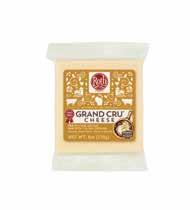




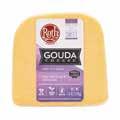


















 Lindsay Christians, University of Wisconsin Press
Lindsay Christians, University of Wisconsin Press

 Rude Klett,
Rude Klett,




































 Photos
Photos



 Left page: illustrations by Nicole Peaslee. Right page: photo by Kristen Wagner.
Left page: illustrations by Nicole Peaslee. Right page: photo by Kristen Wagner.








 Left: photo by Michael Sambar. Right: photos courtesy of Mu Mushrooms.
Left: photo by Michael Sambar. Right: photos courtesy of Mu Mushrooms.













 Photos by Sunny Frantz
Photos by Sunny Frantz








































 Photos courtesy of Homecoming
Photos courtesy of Homecoming




















































 — Shaina Robbins Papach, co-owner, The Harvey House
Photo by Nicole Franzen
— Shaina Robbins Papach, co-owner, The Harvey House
Photo by Nicole Franzen








